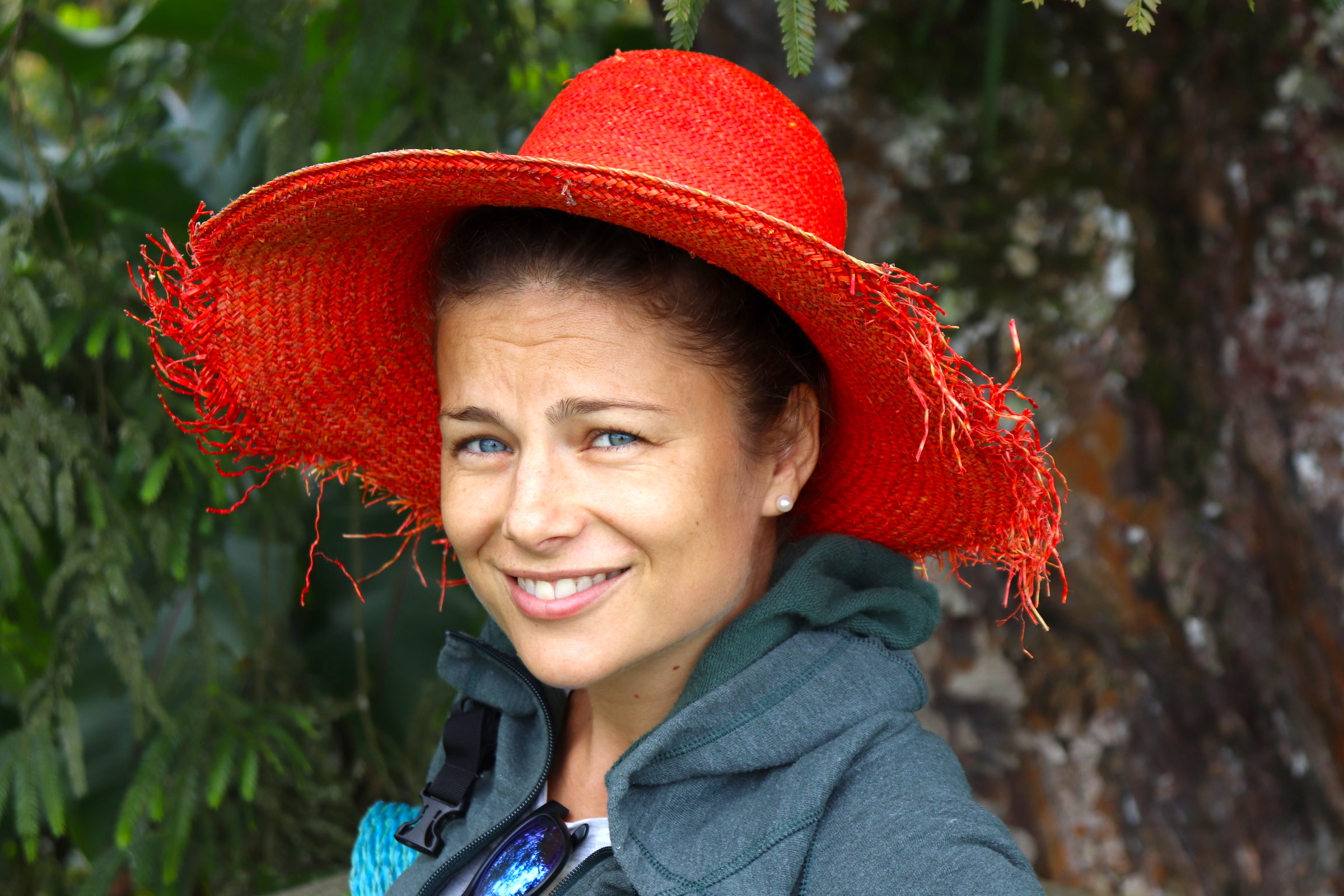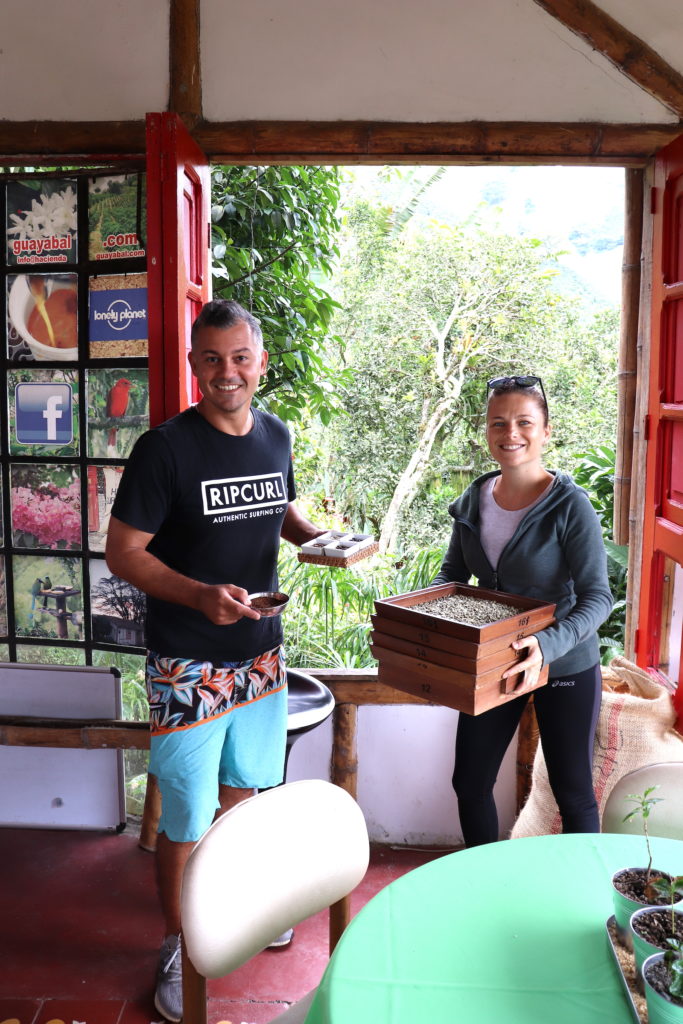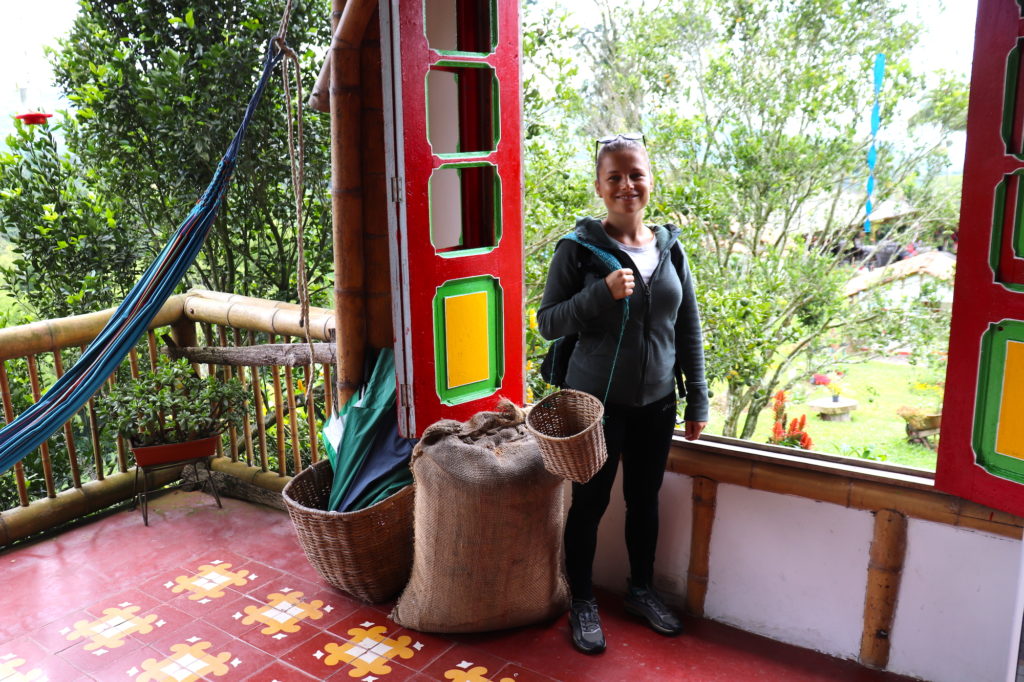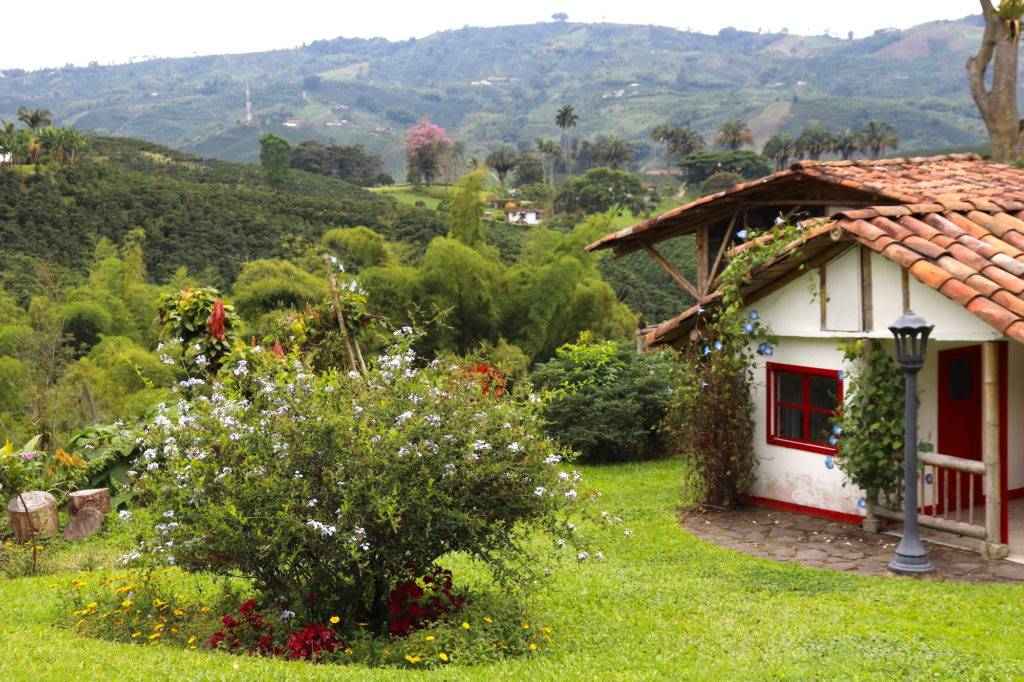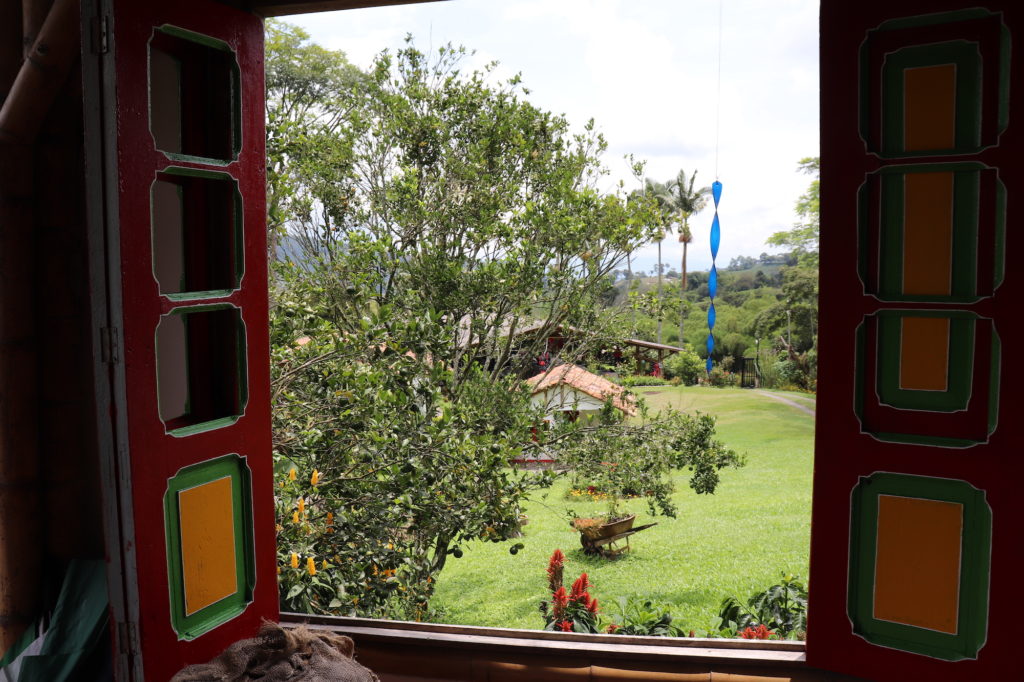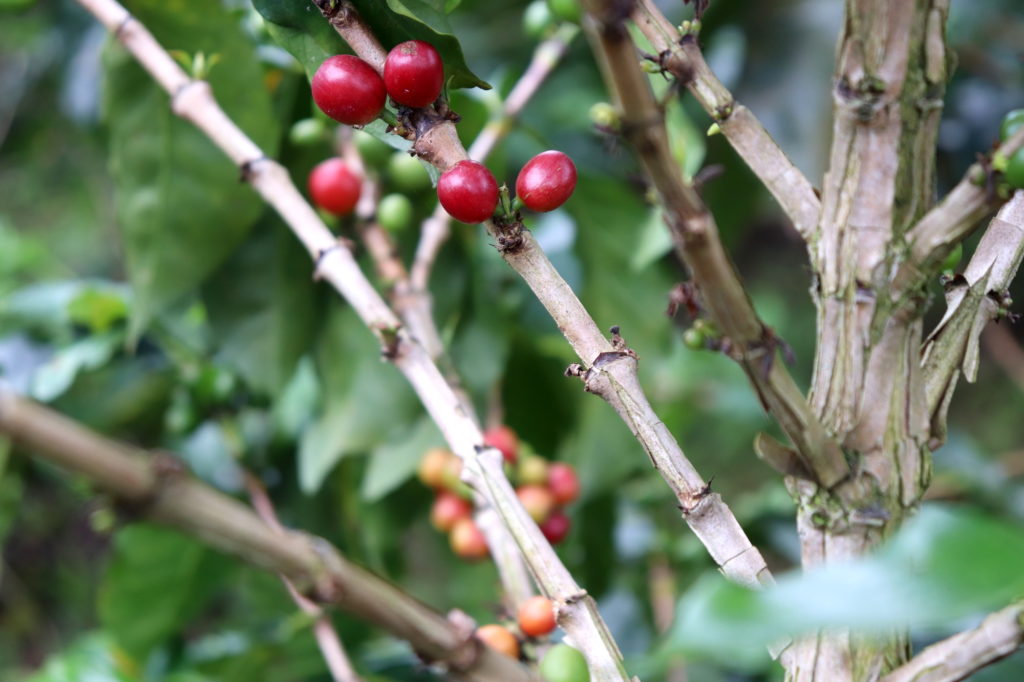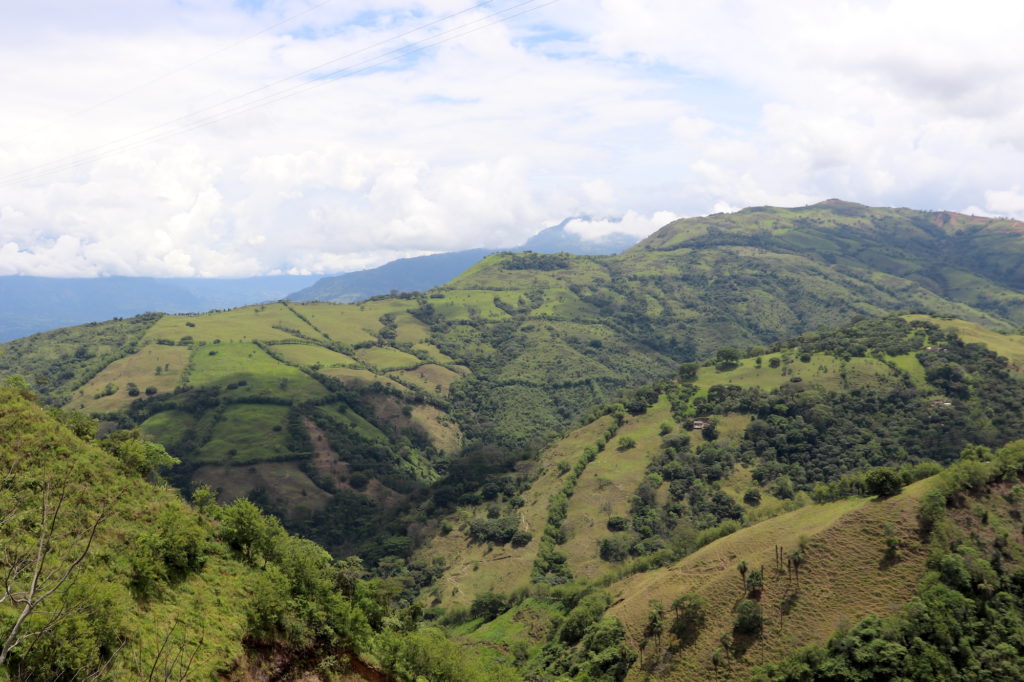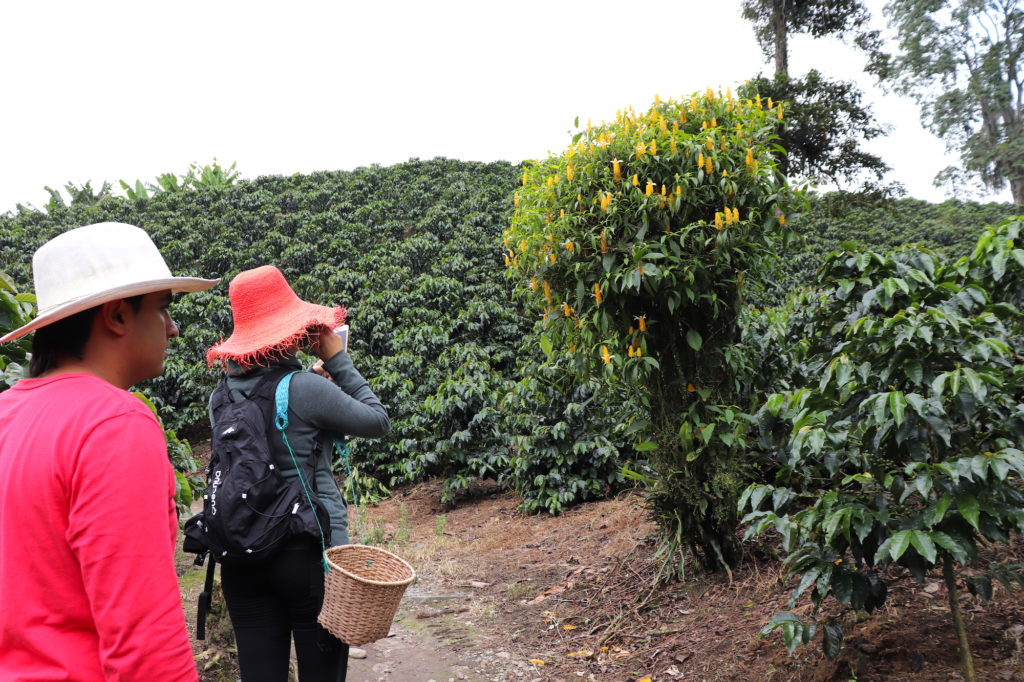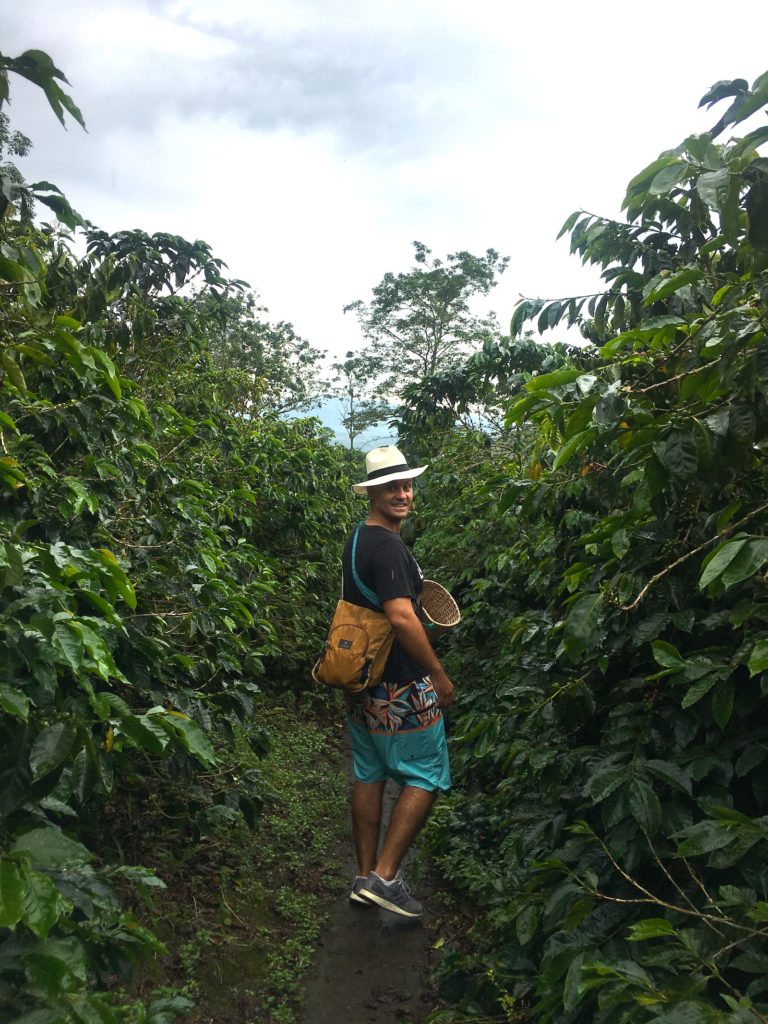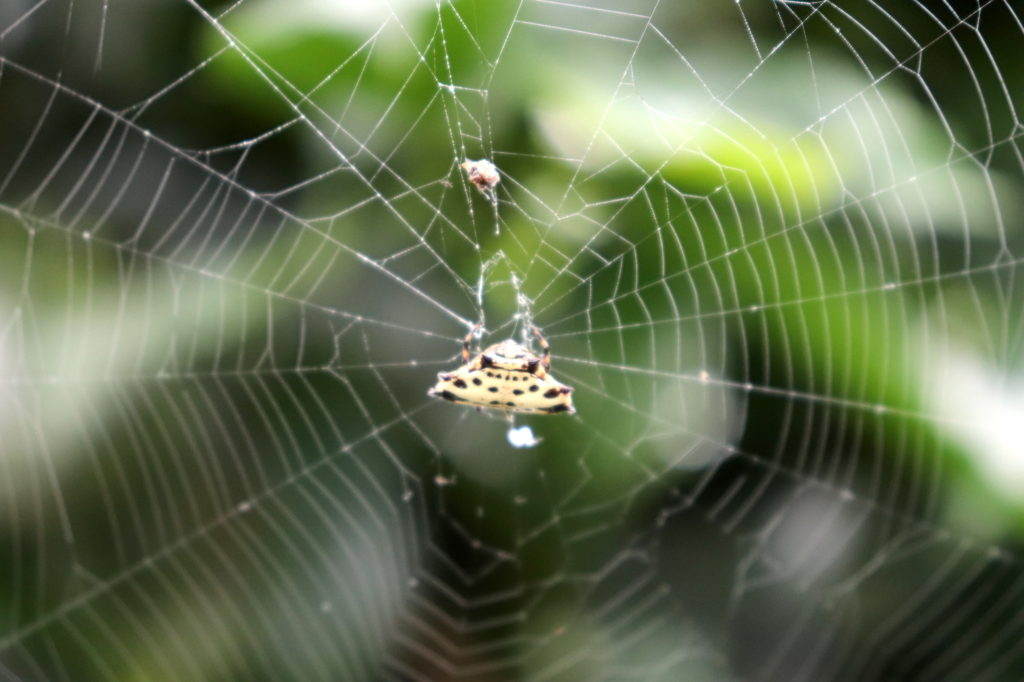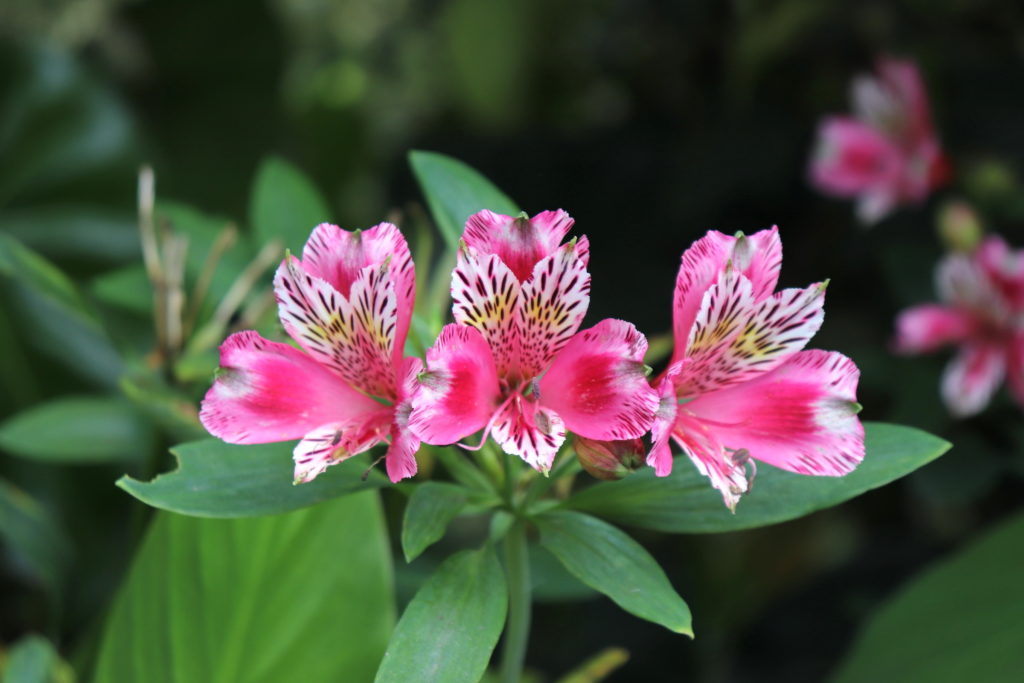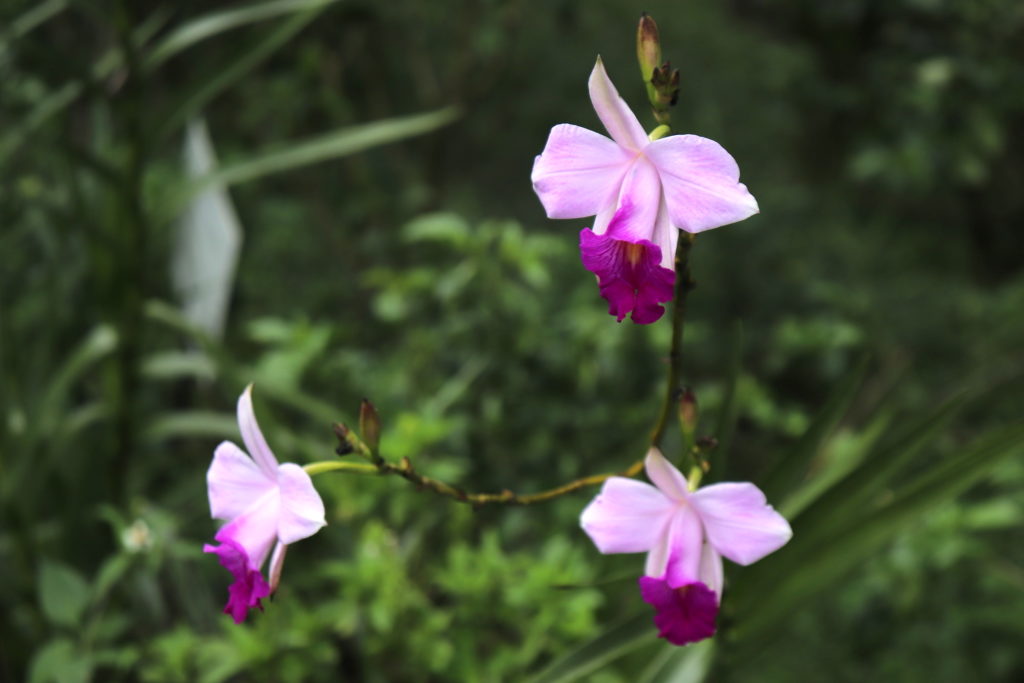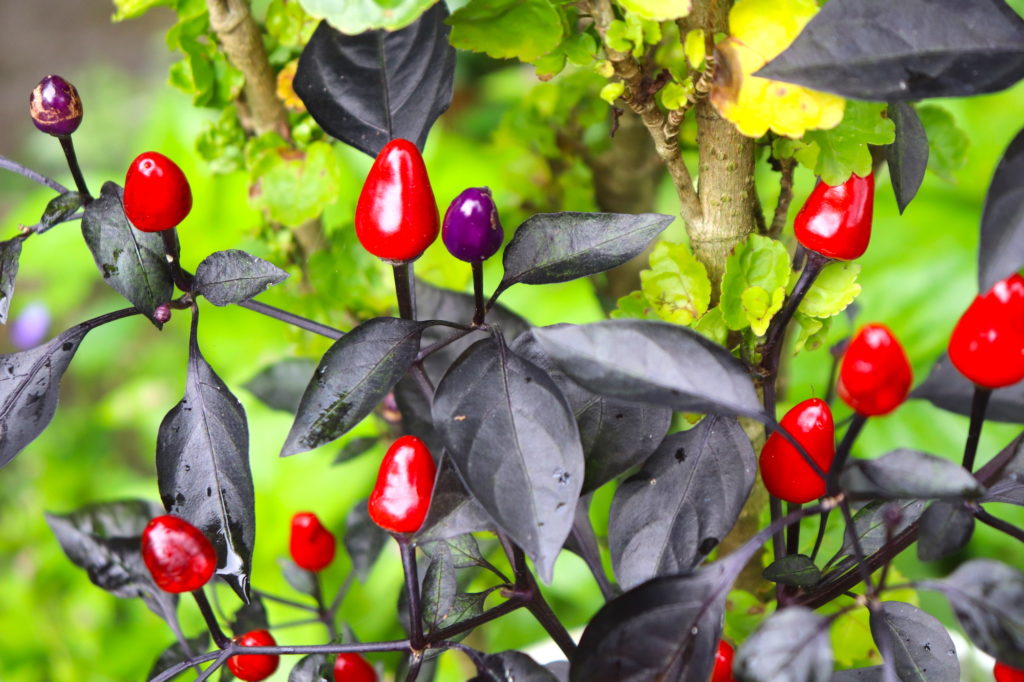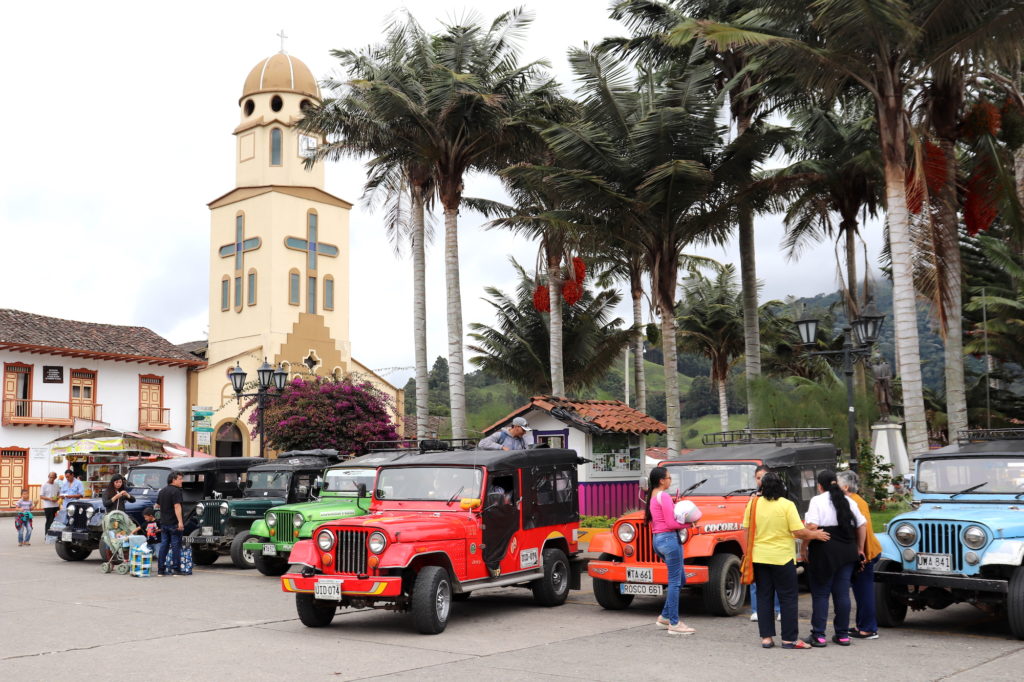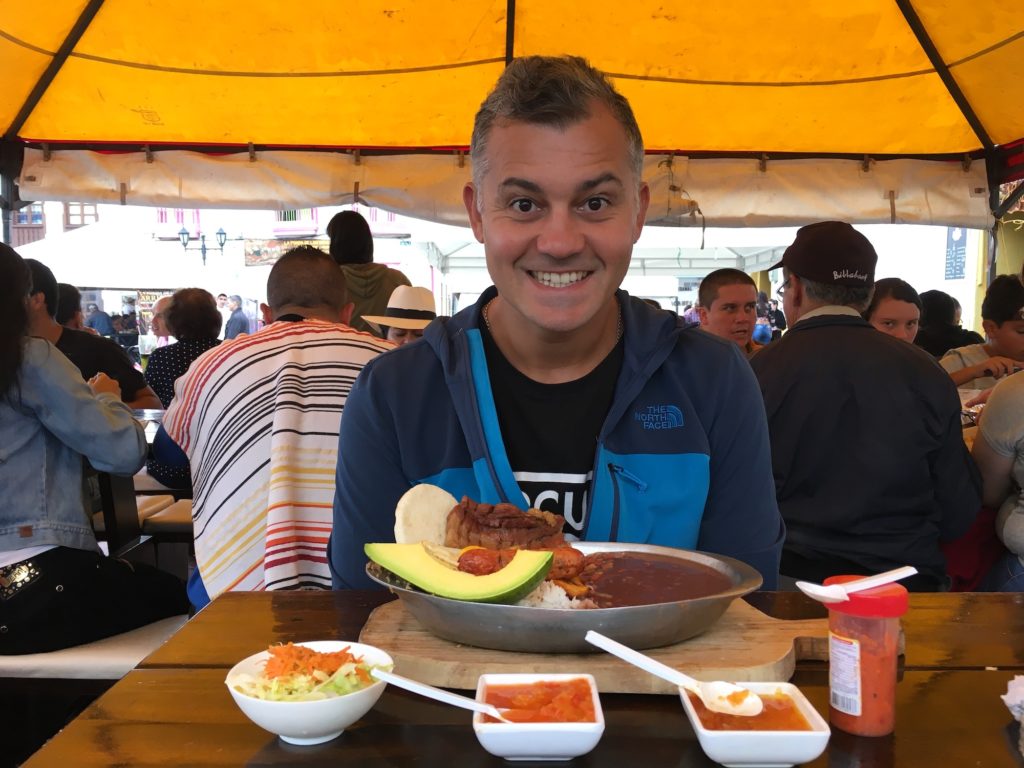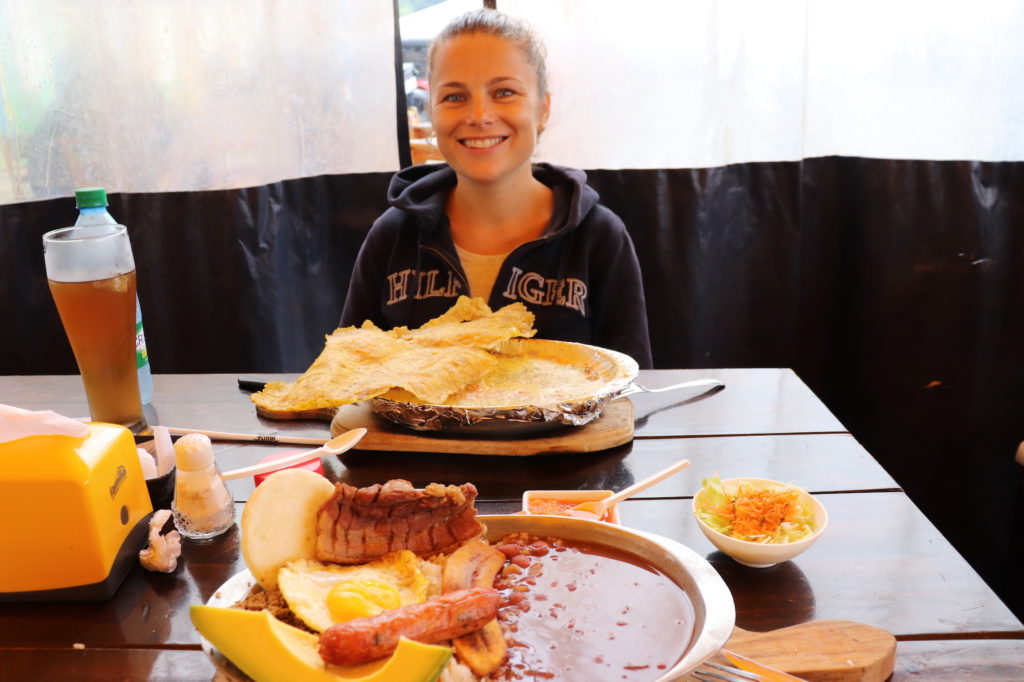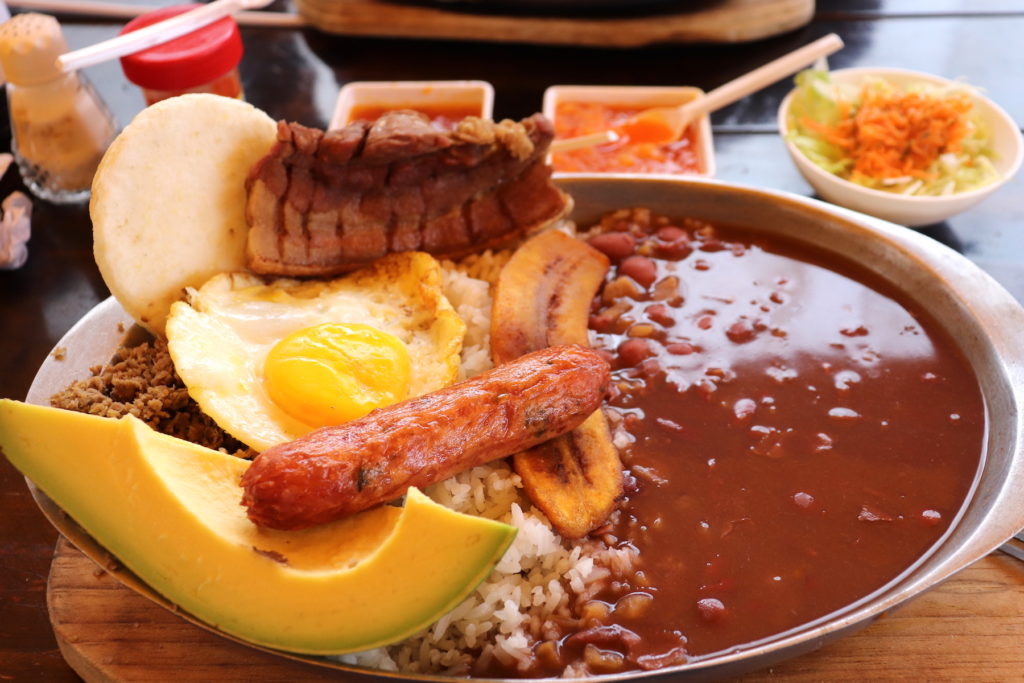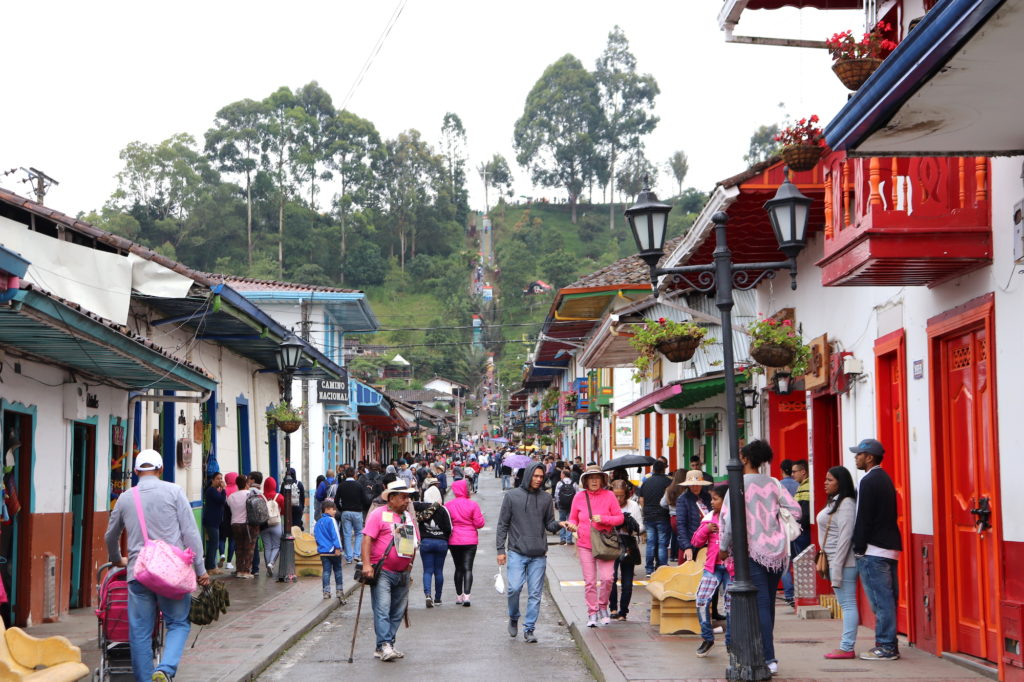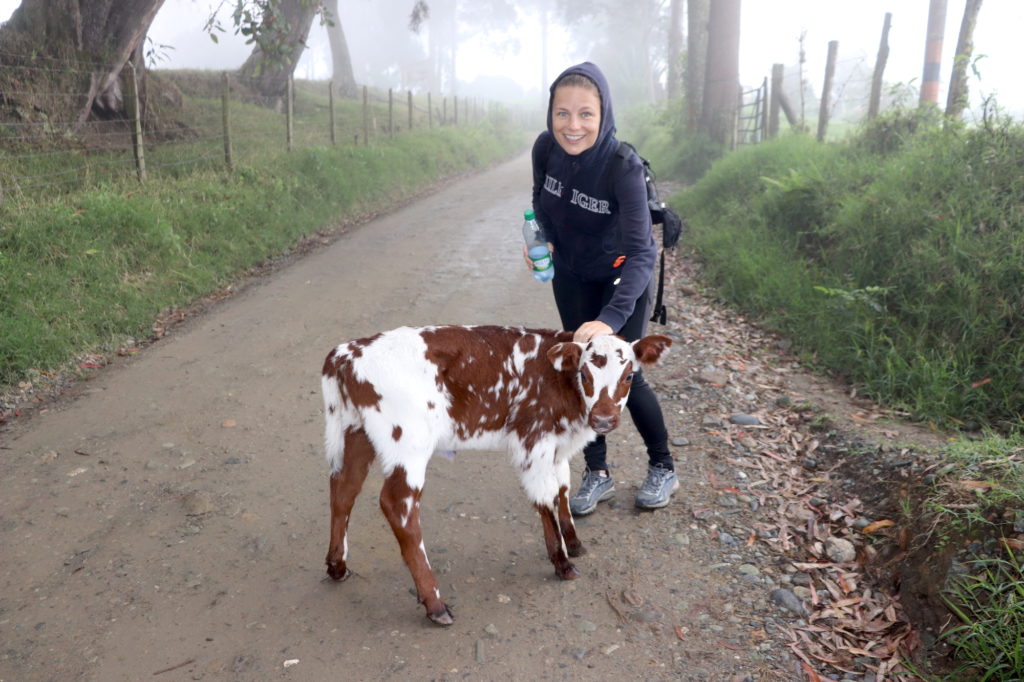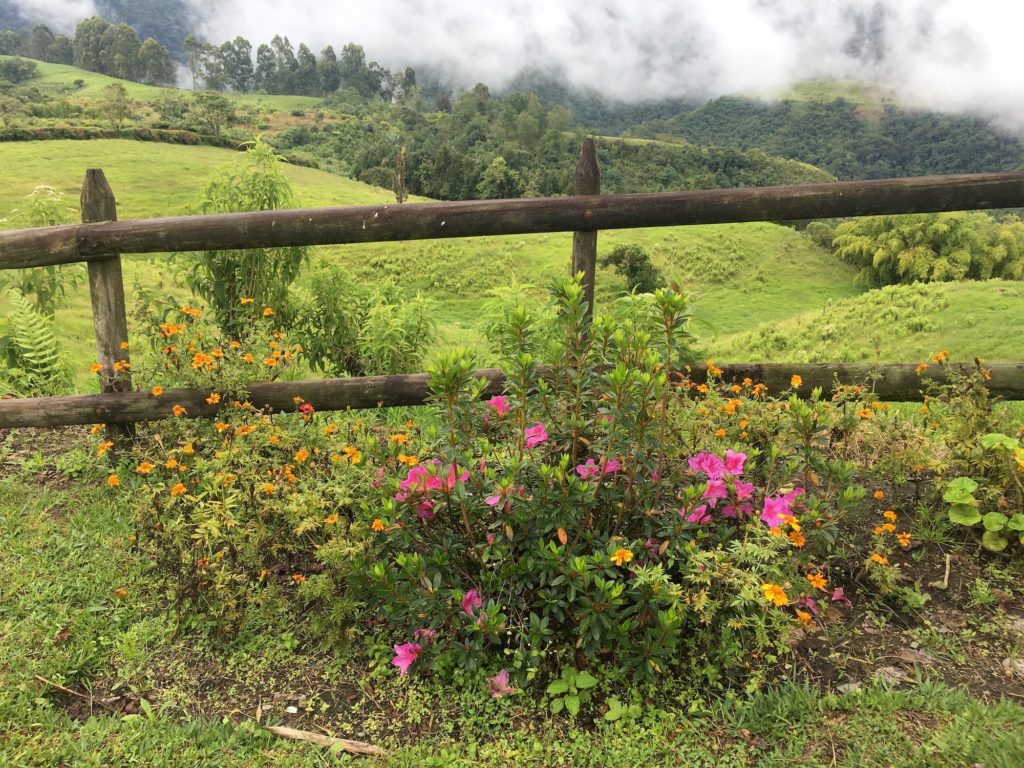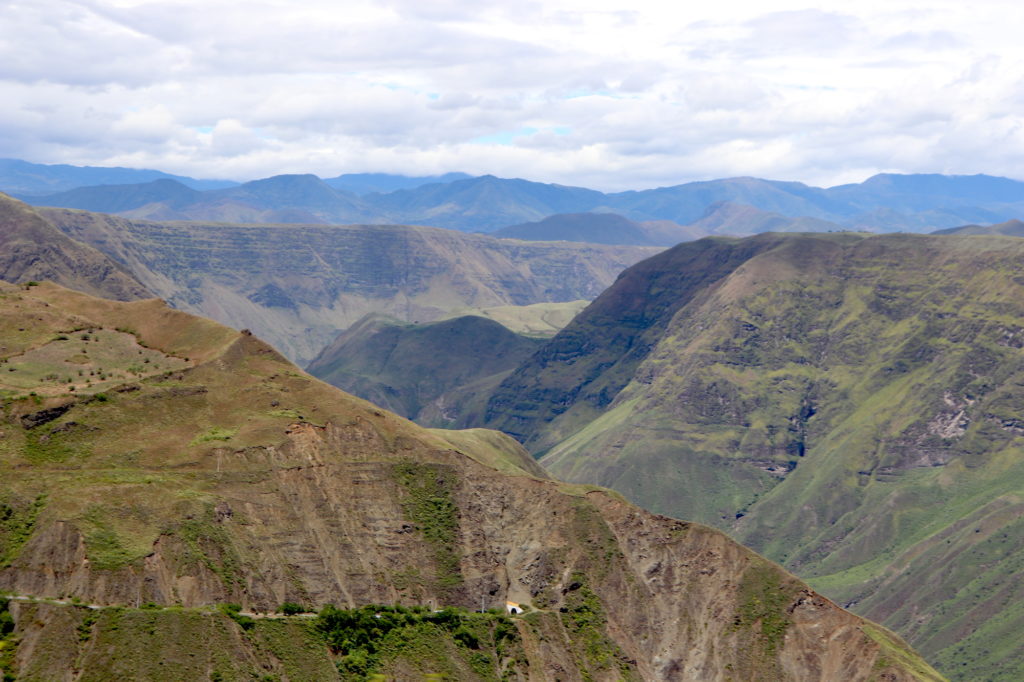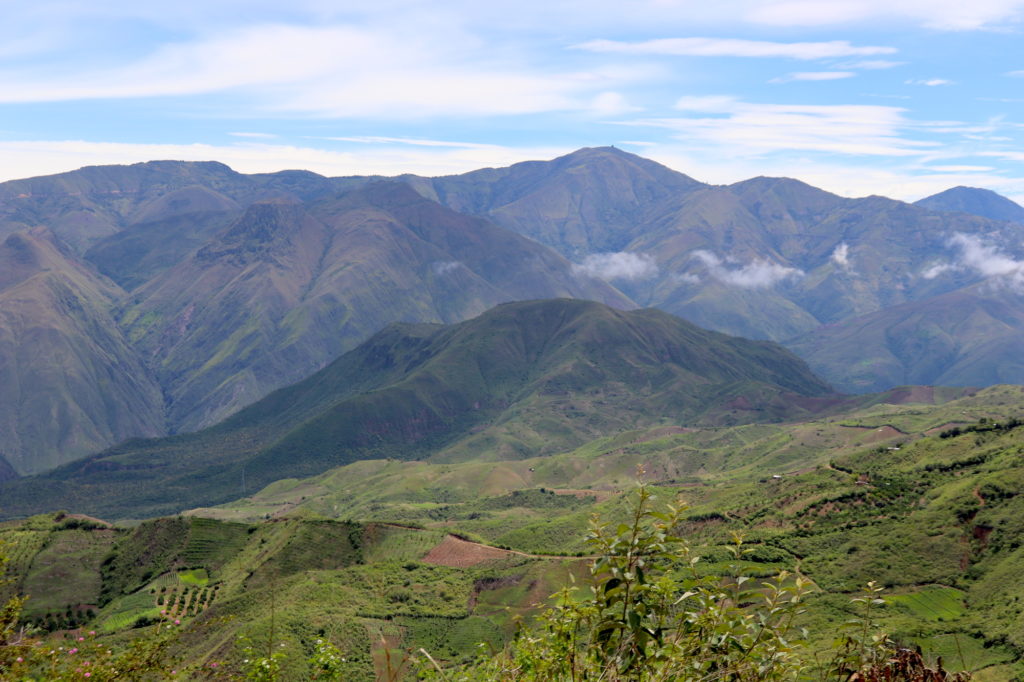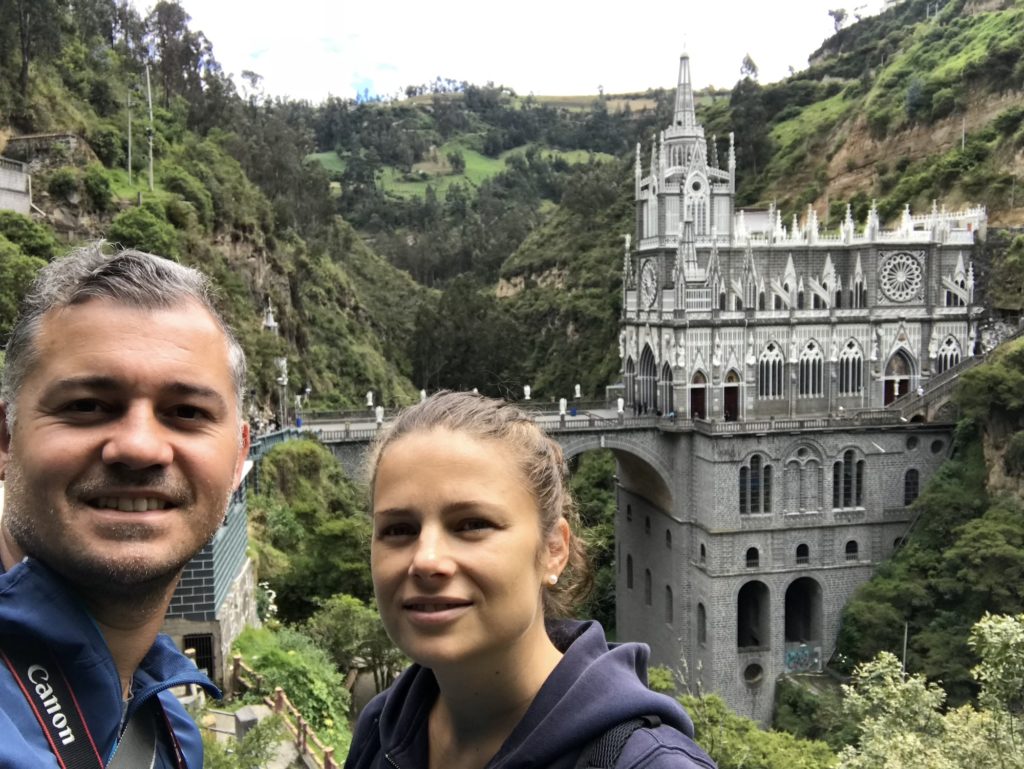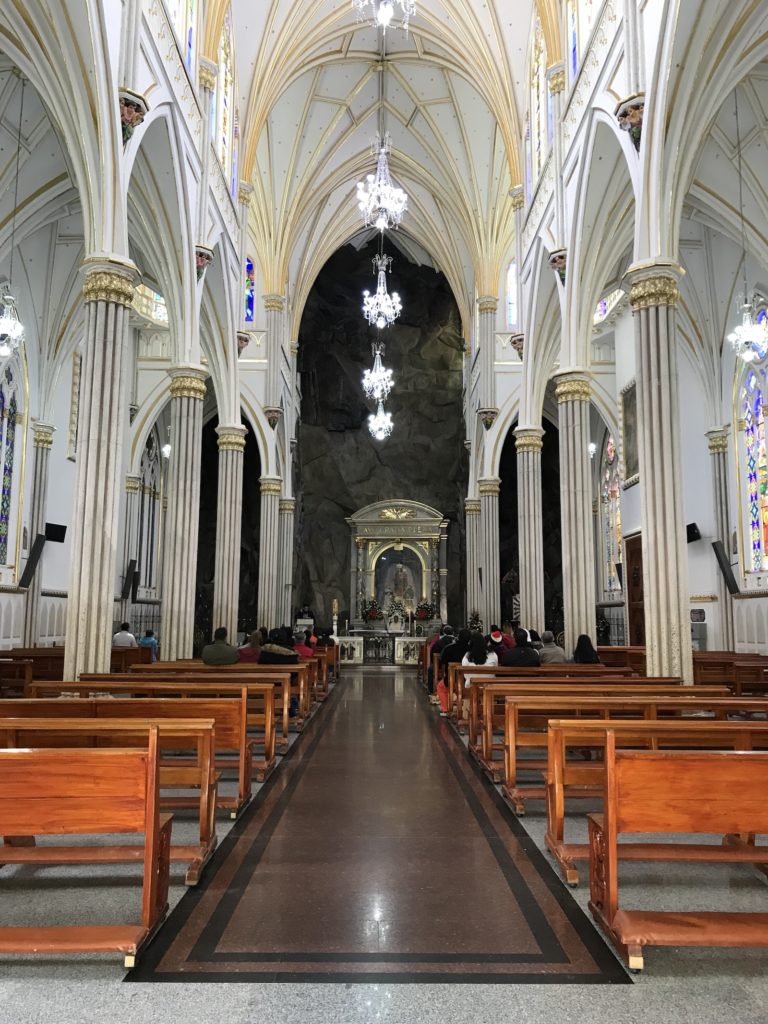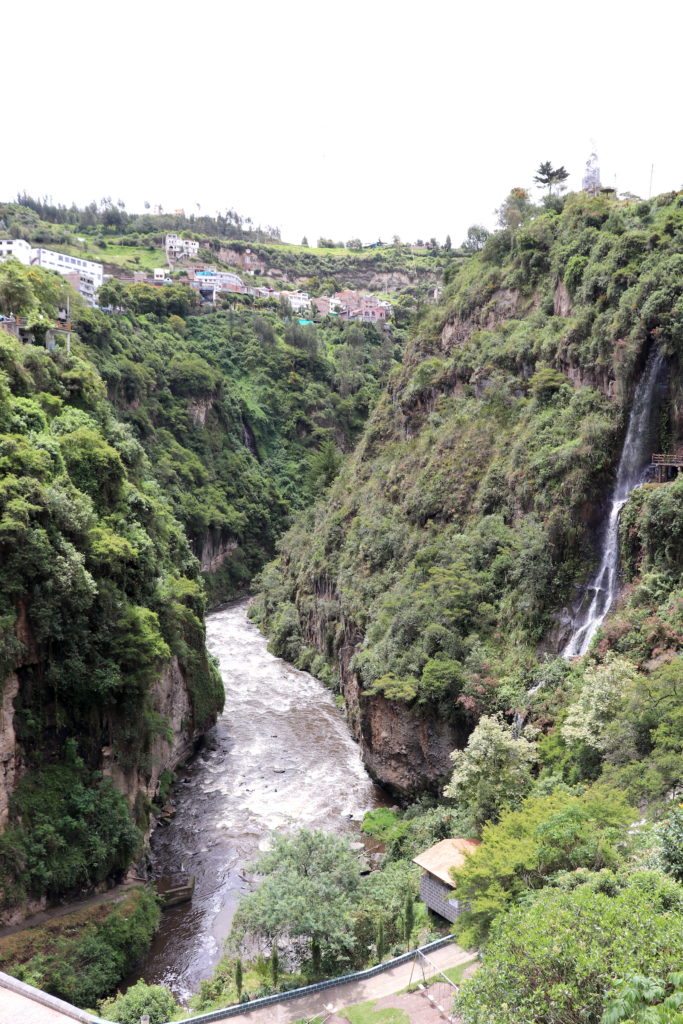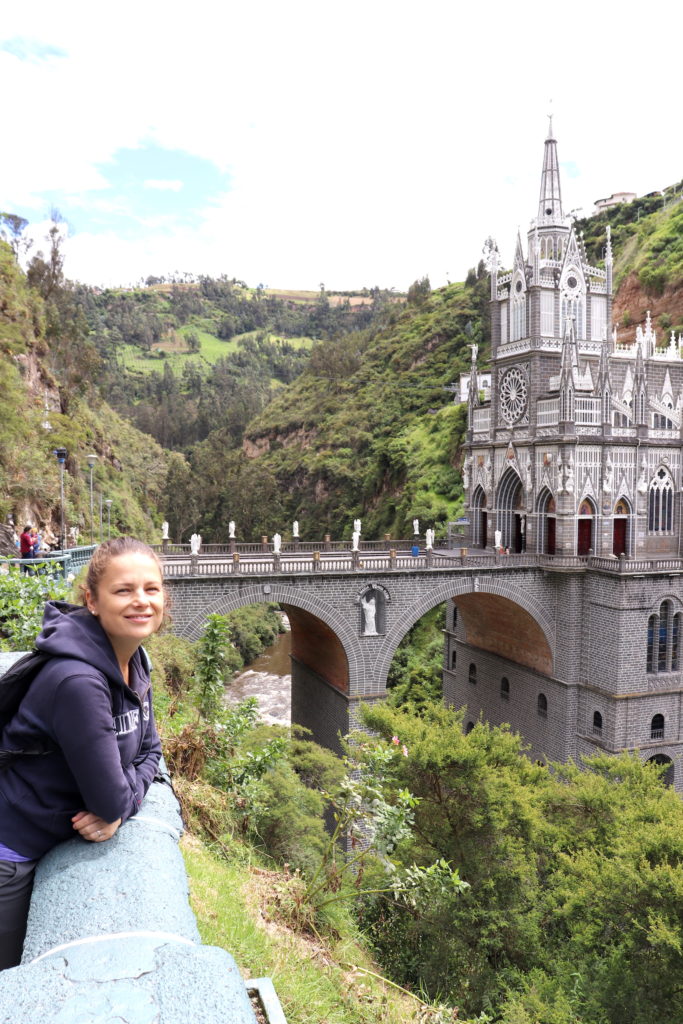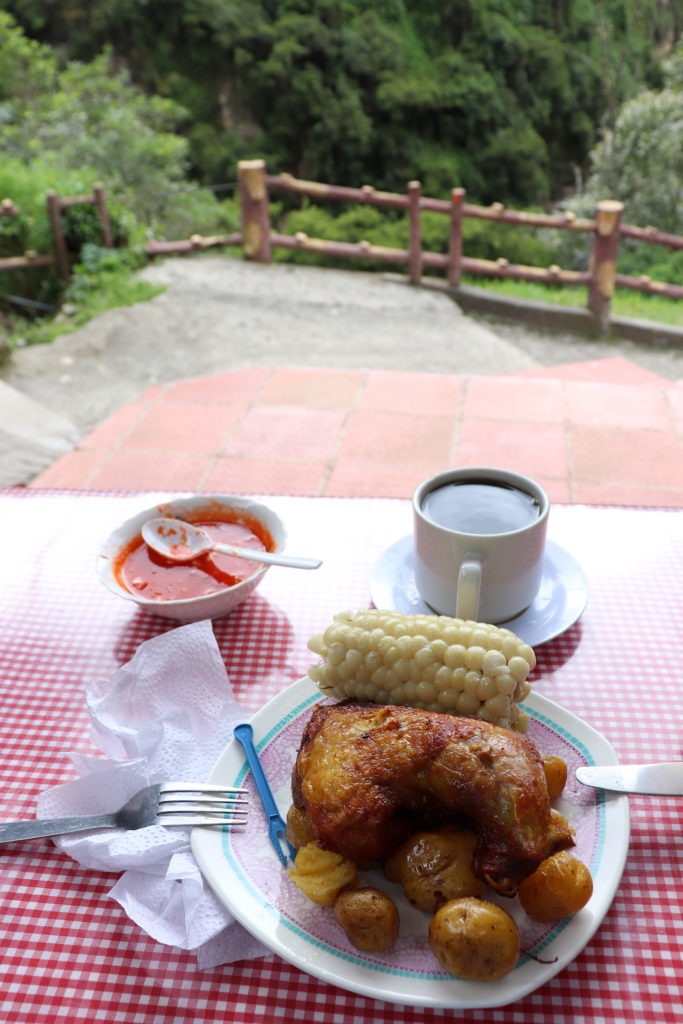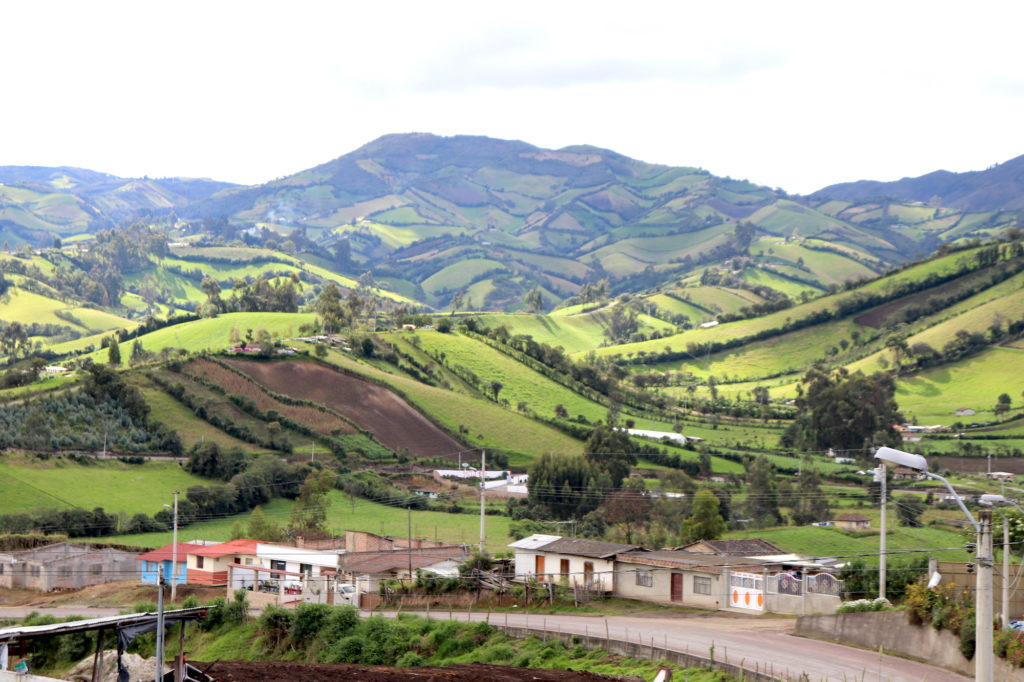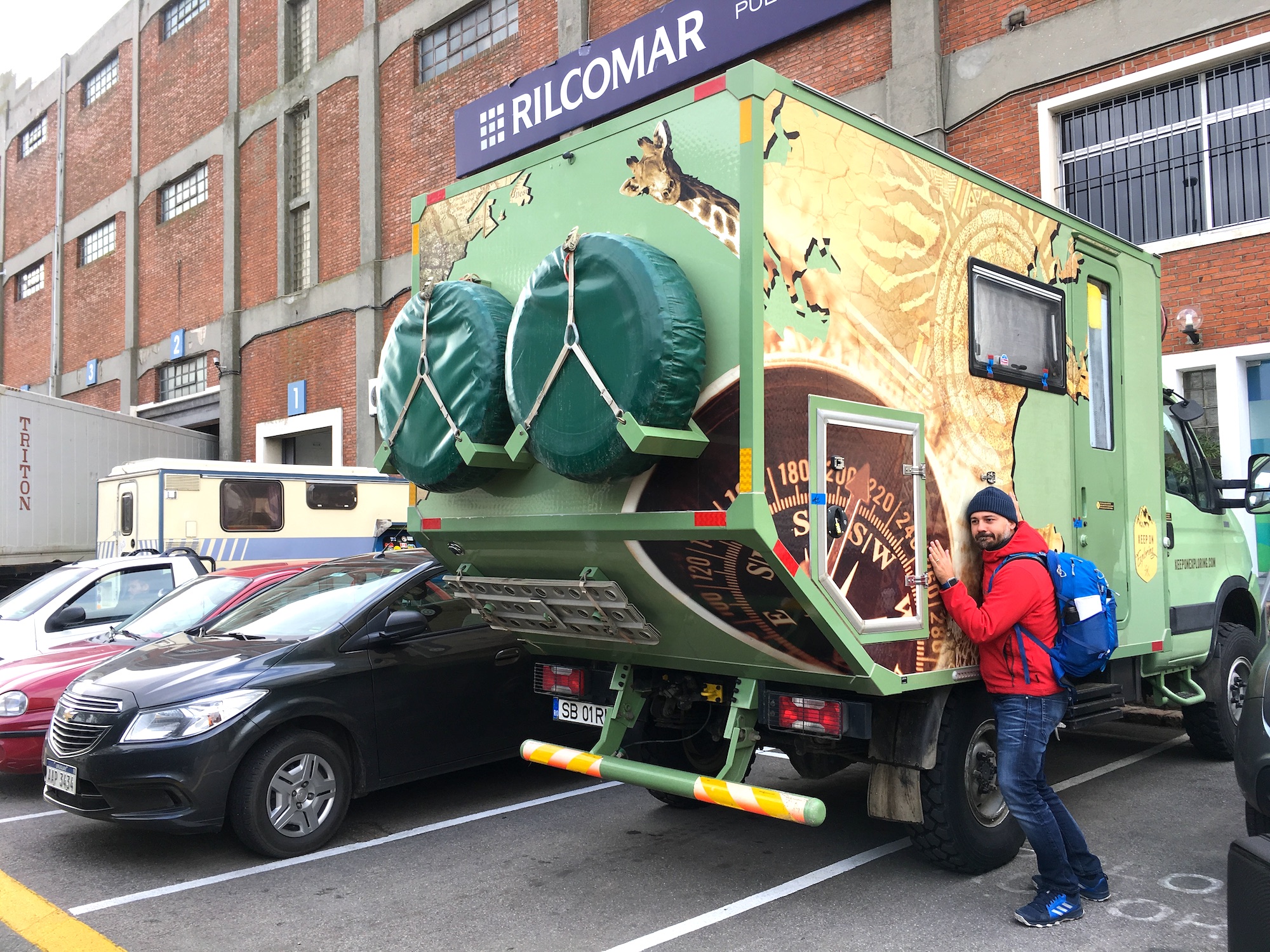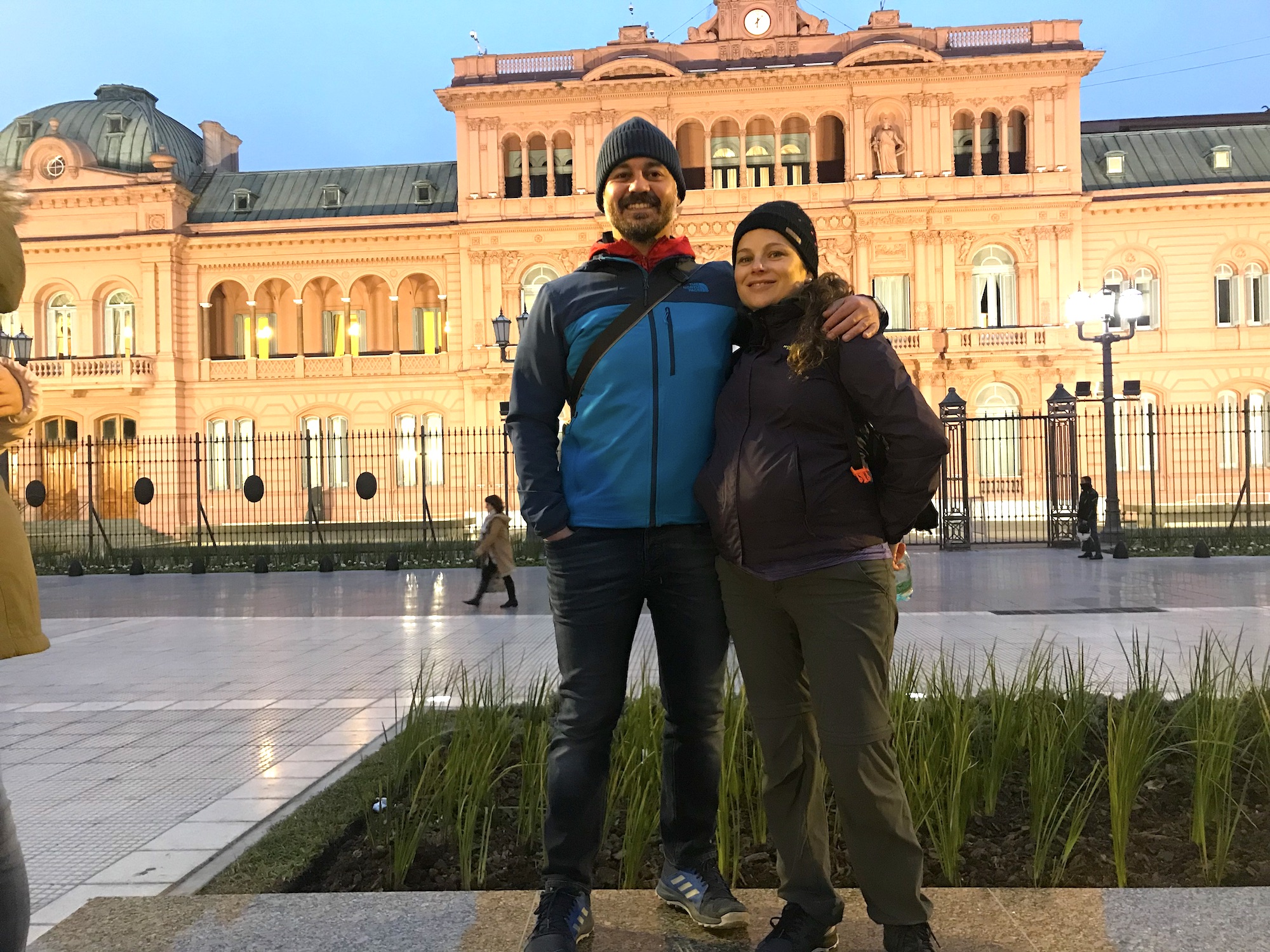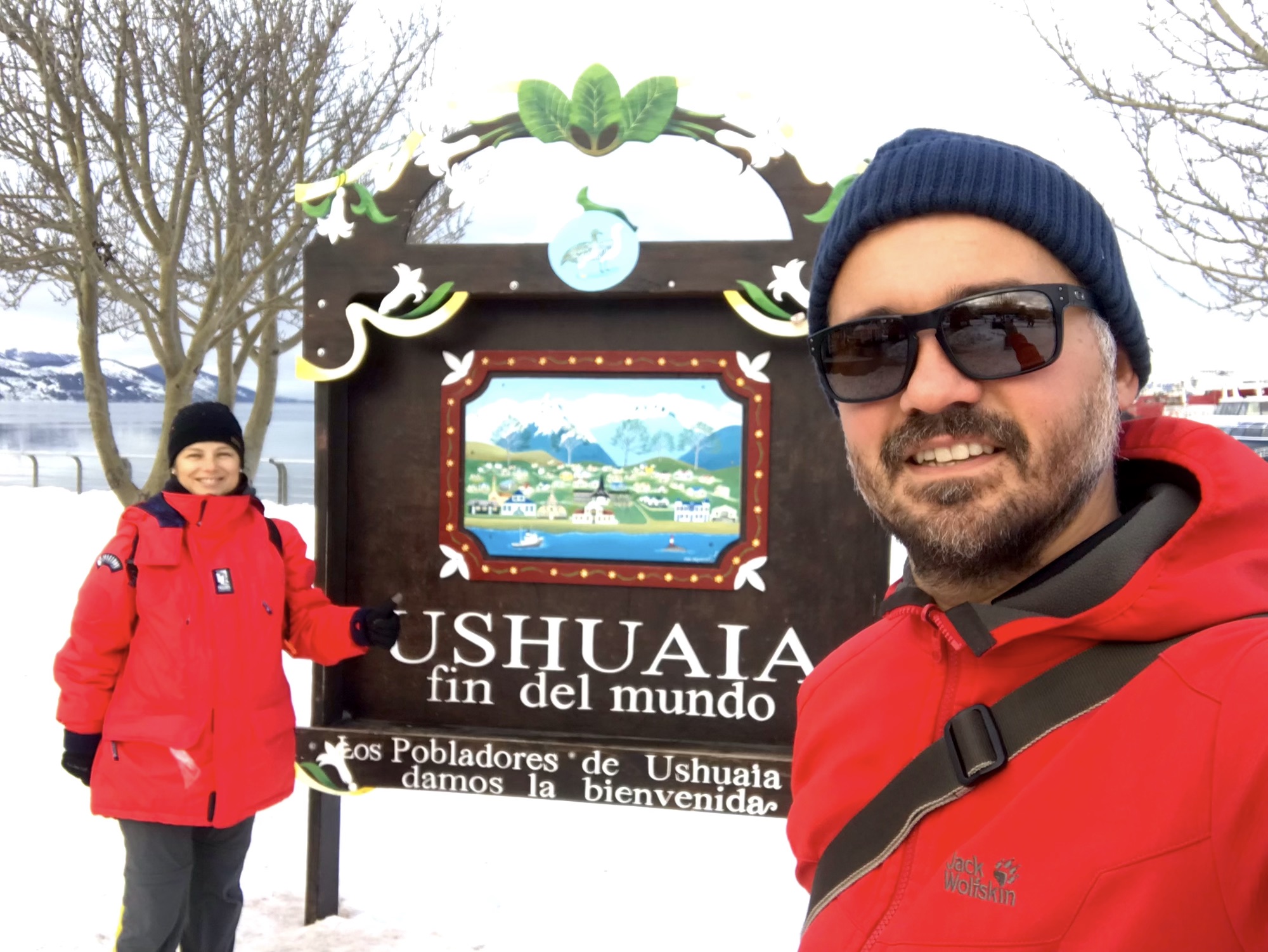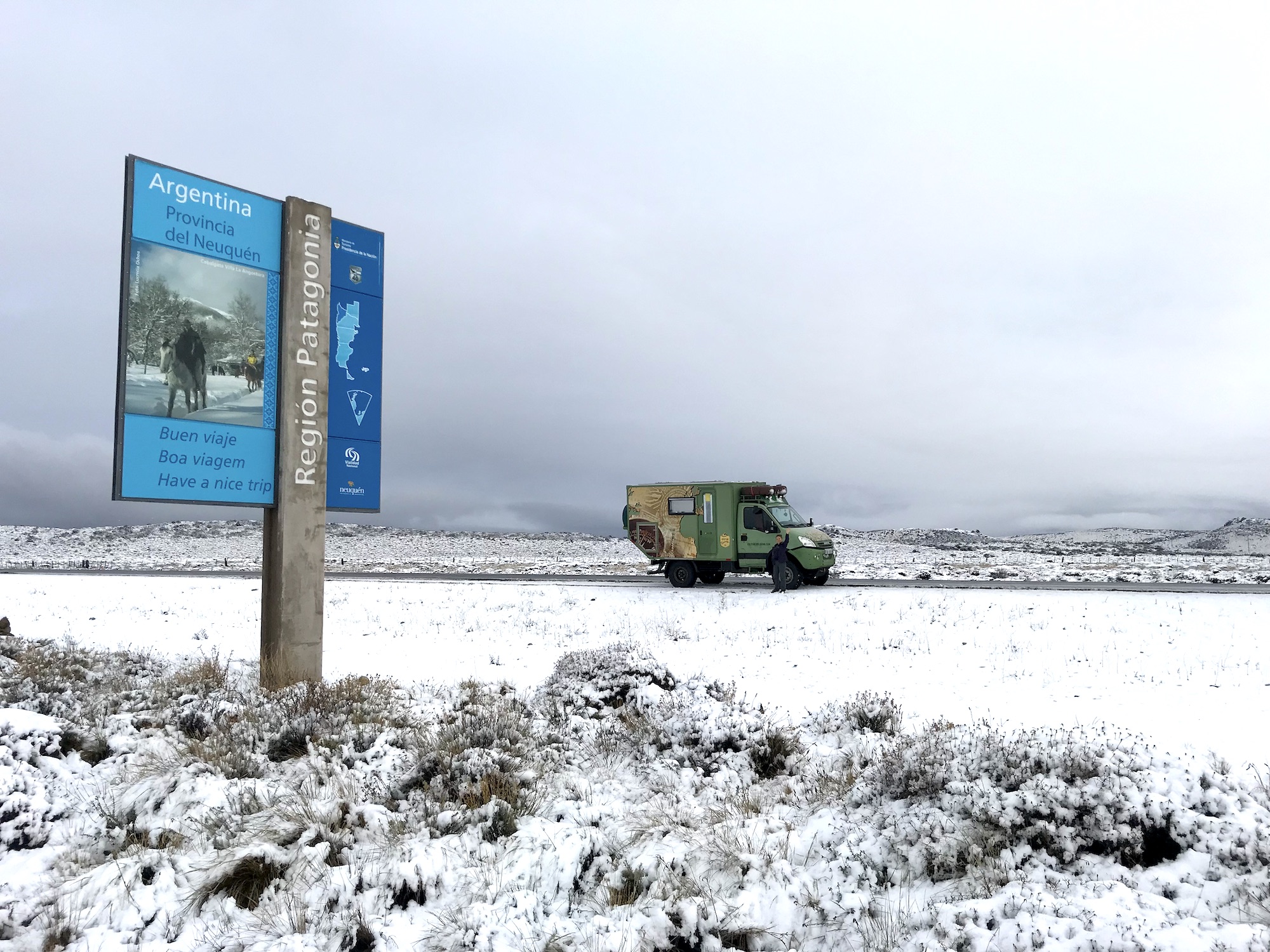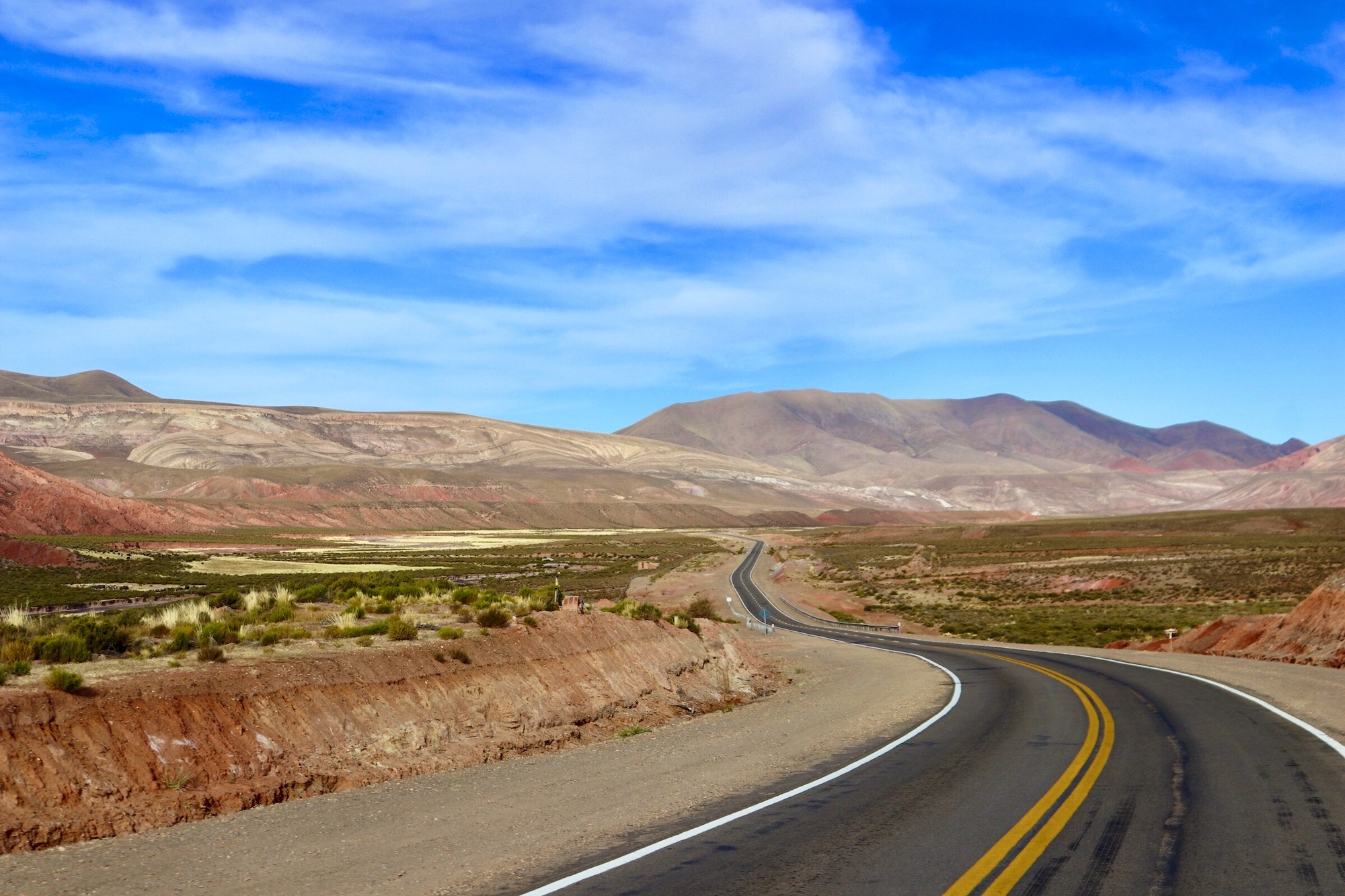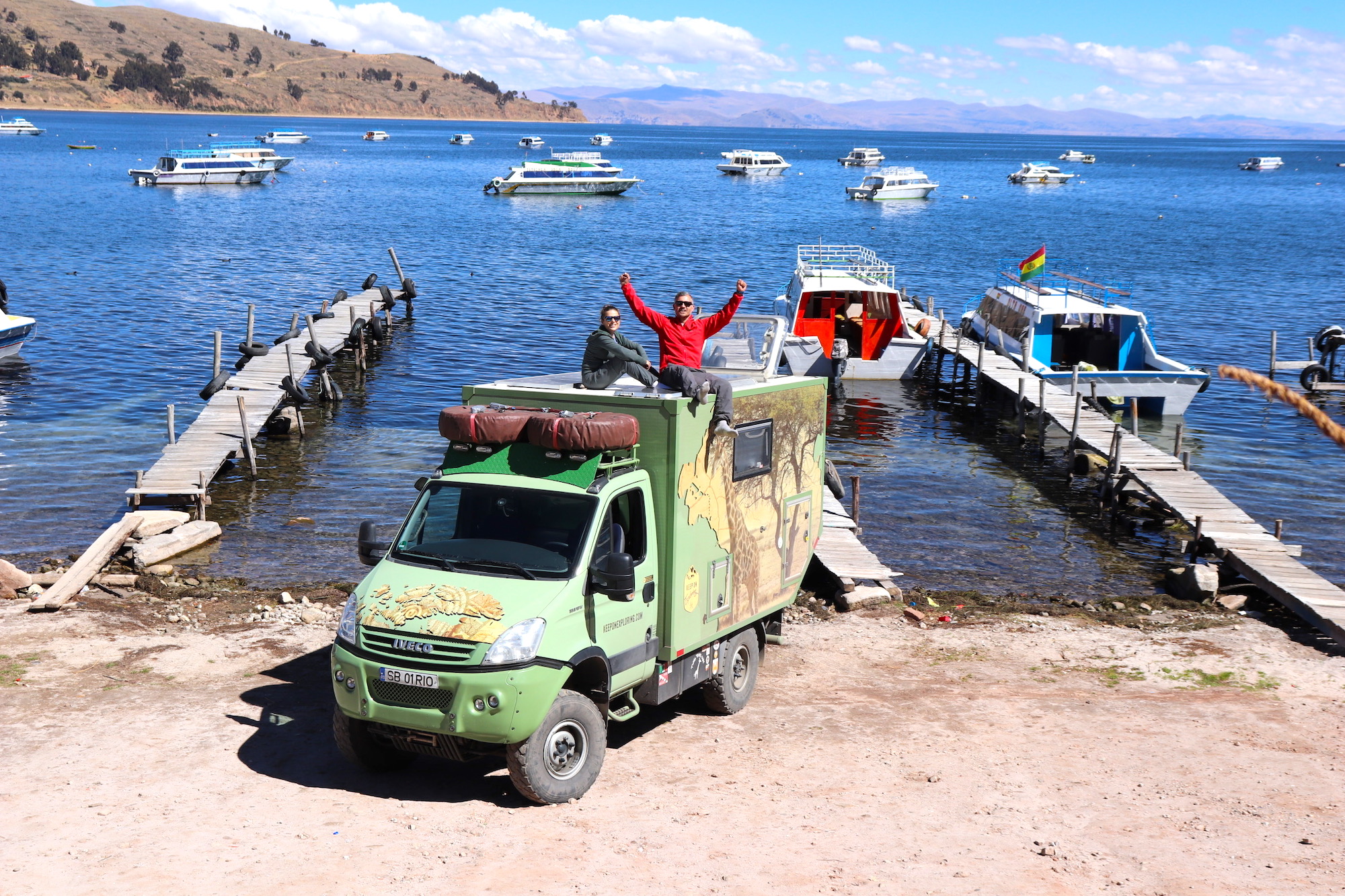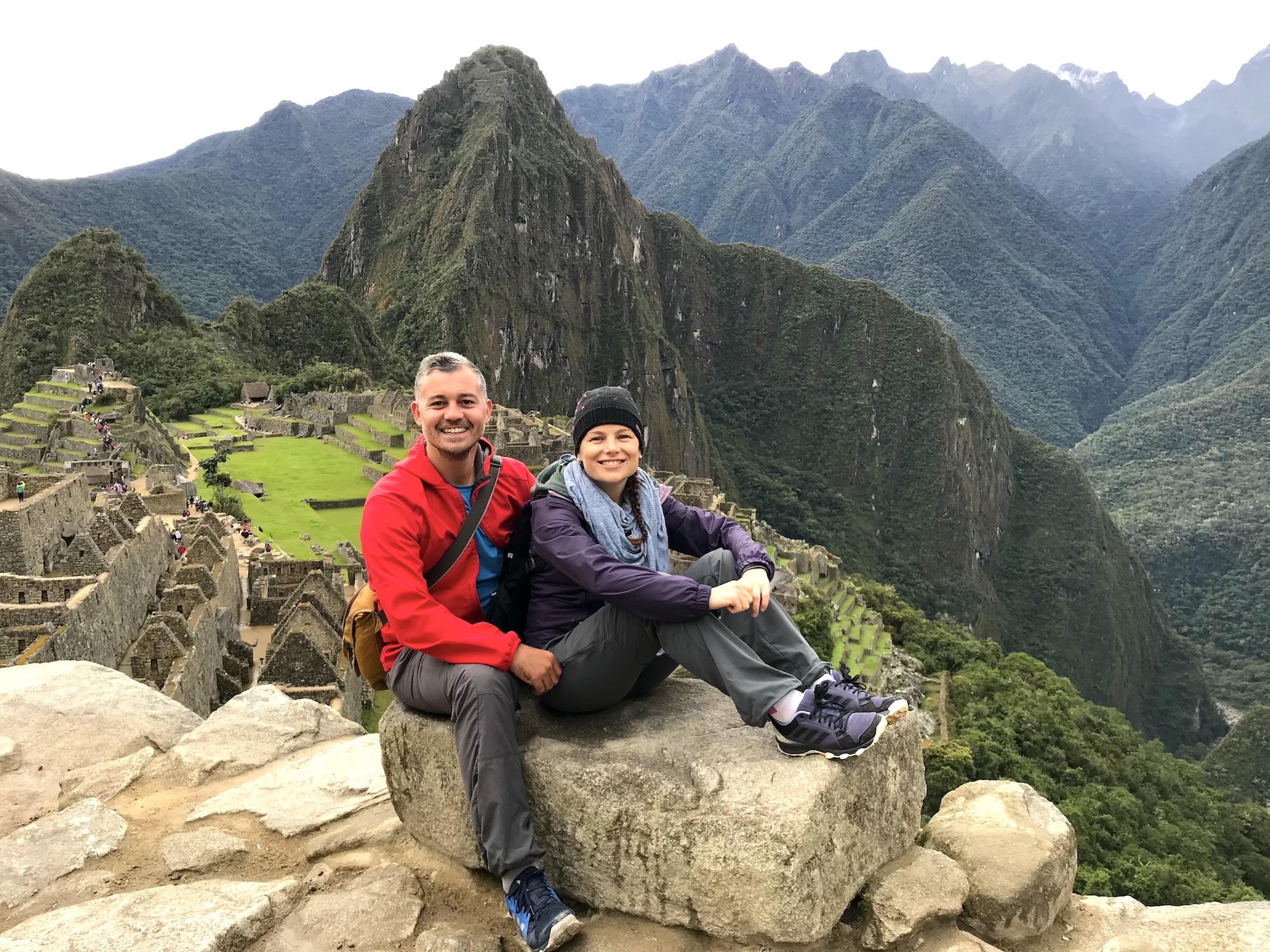The more we explored Colombia the more amazed we were with its beauty and variety. Lovely panoramas of coffee plantations and tropical mountain landscapes were unfolding south of Medellin. We received a great recommendation to camp at a coffee farm called Finca Guyabal next to Manizales where they offered a fantastic coffee seminar and tour. The time came to find out all the secrets behind producing some of the best coffees in the world.
Next on tour we stopped in Salento where we encountered an animated overlanders’ campground located on a top hill with tremendous views to Cocora Valley known for its lofty wax palm trees. What a spot!
Driving all the way south the country was a constant marvel as the Andes continued to inspire us with their heights, plateaus, canyons, rivers, and green valleys.
Our journey in Colombia concluded with a visit to the impressive Las Lajas Sanctuary, a Catholic basilica built inside a dramatic canyon next to the border with Ecuador.
Colombia, what a country!

We left Medellin towards Salento, an Andean town located in the coffee region of Colombia, about 250km distance from Medellin. The first part of the road took a while since we had to descent from the top of the mountain range on a 45 degrees slope. We almost fried our brakes. Whilst we were planning to reach Salento that same day, after 7 hours zigzagging through the cordilleras, we had covered meagre 150km…on top of the curvy roads there were multiple stops and diversions caused by landslides. It was getting dark outside, so we had to improvise and call the day.
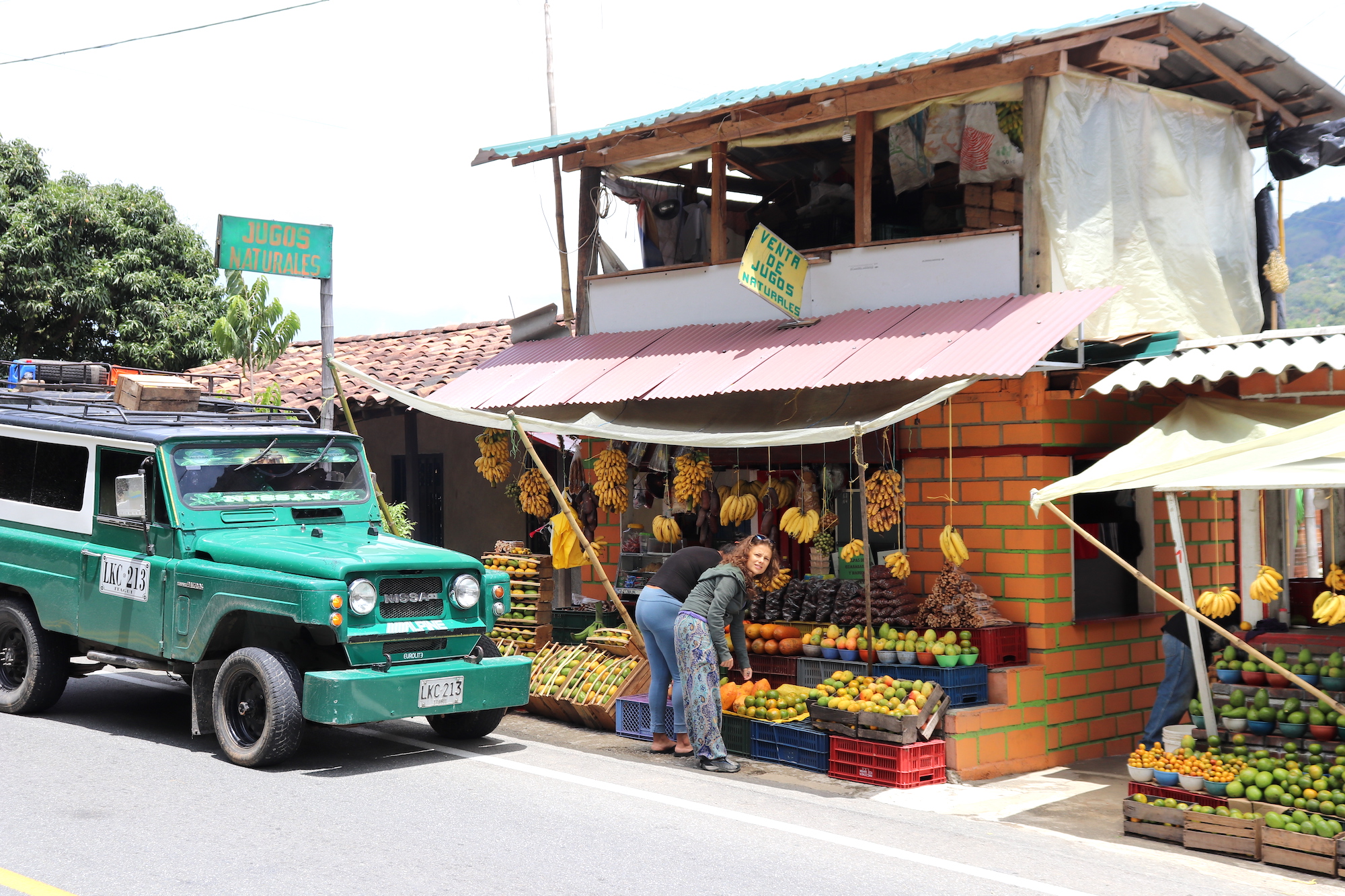
Luckily, we were near a coffee farm named Finca Guyabal, near Manizales, which was highly recommended on iOverlander. We entered the gates of the property located on top of a steep hill by sunset. We sensed immediately the fresh air surrounding us. A great coincidence was to bump into Peter over there. You will remember Peter from our adventure in Panama. Peter is the solo German overlander driving his modern VW California. We were so happy to see a familiar face and to catch up with his road adventures. JP was even happier, since he got the chance to celebrate the encounter over couple of wine bottles along with some philosophical discussions up to midnight :-)). Whilst they were looking to solve all world’s problems I was snoring.
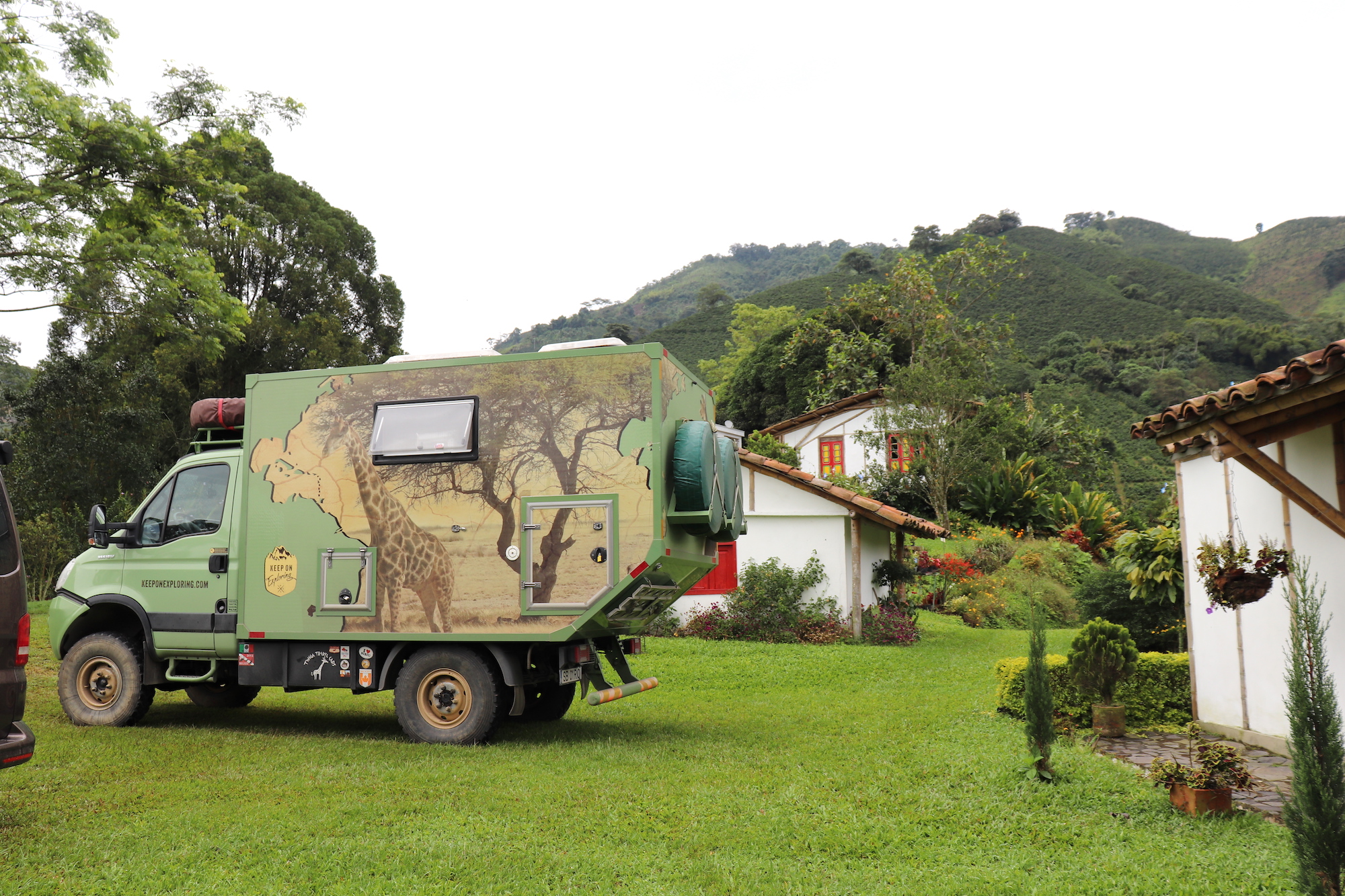
On the next day we were up early and ready to start the coffee tour. We discovered a breathtaking panorama of the farm and birds were chirping everywhere. We were absorbed by the abundant, fresh and colorful nature. Everything looked so manicured and well cared, from the plantation, the gardens and the complex of buildings.
The tour started at the classroom with a theoretical part, where we were introduced into the world of coffee: how it is cultivated, produced and prepared to be exported. We learned that coffee producing countries are mostly located in tropical regions, such as Colombia, Brazil, Ethiopia, Vietnam, India and Indonesia, to name a few. The top producing countries in the world are in this order Brazil, Vietnam, and Colombia, with Brazil producing one third of all the world’s coffee.
We also learned about the different types and subtypes of coffee, and that the main ones are arabica and robusta. Arabica beans grow well in higher altitudes, while robusta in lower lands. In the highlands of Colombia, arabica is thus the best pick. It is sweeter, softer in taste, with tones of sugar, fruit and berries. The acidity is higher, with that winey taste that characterizes coffee with excellent acidity. Robusta, however, has a stronger, harsher taste, with a grain-like overtone and peanutty aftertaste. From the combination of the two one can get thousands of types of blends of coffee. In the Guayabal farm they produce a hybrid form of arabica that has red beans.
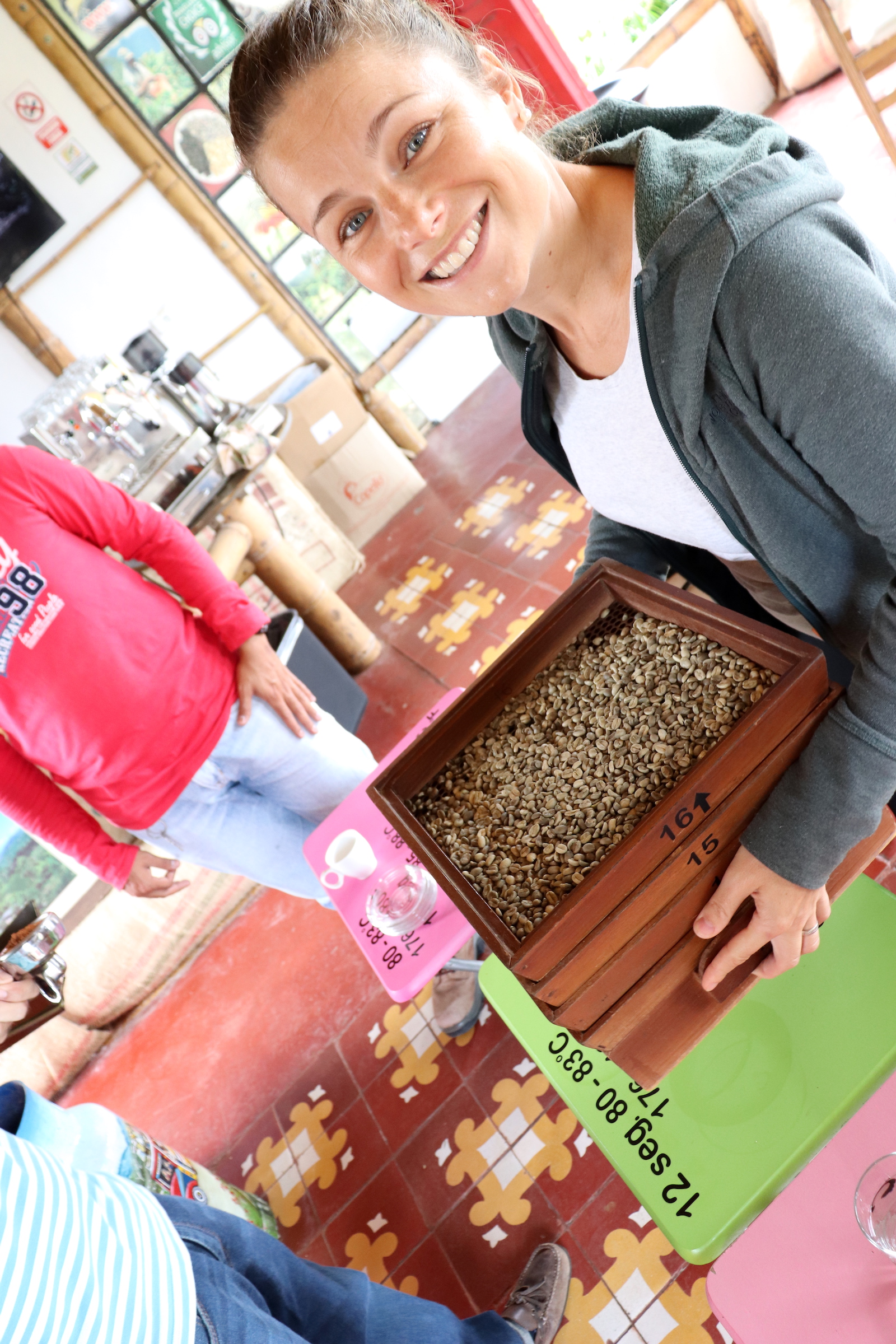
After we got acquainted with the process, and following on site laboratory experiments, we departed on a tour inside the coffee plantation. The objective was to illustrate in practice all the knowledge that we were told in theory. It was a bit of a light hike, as in Colombia the coffee grows often on steep mountain slopes.
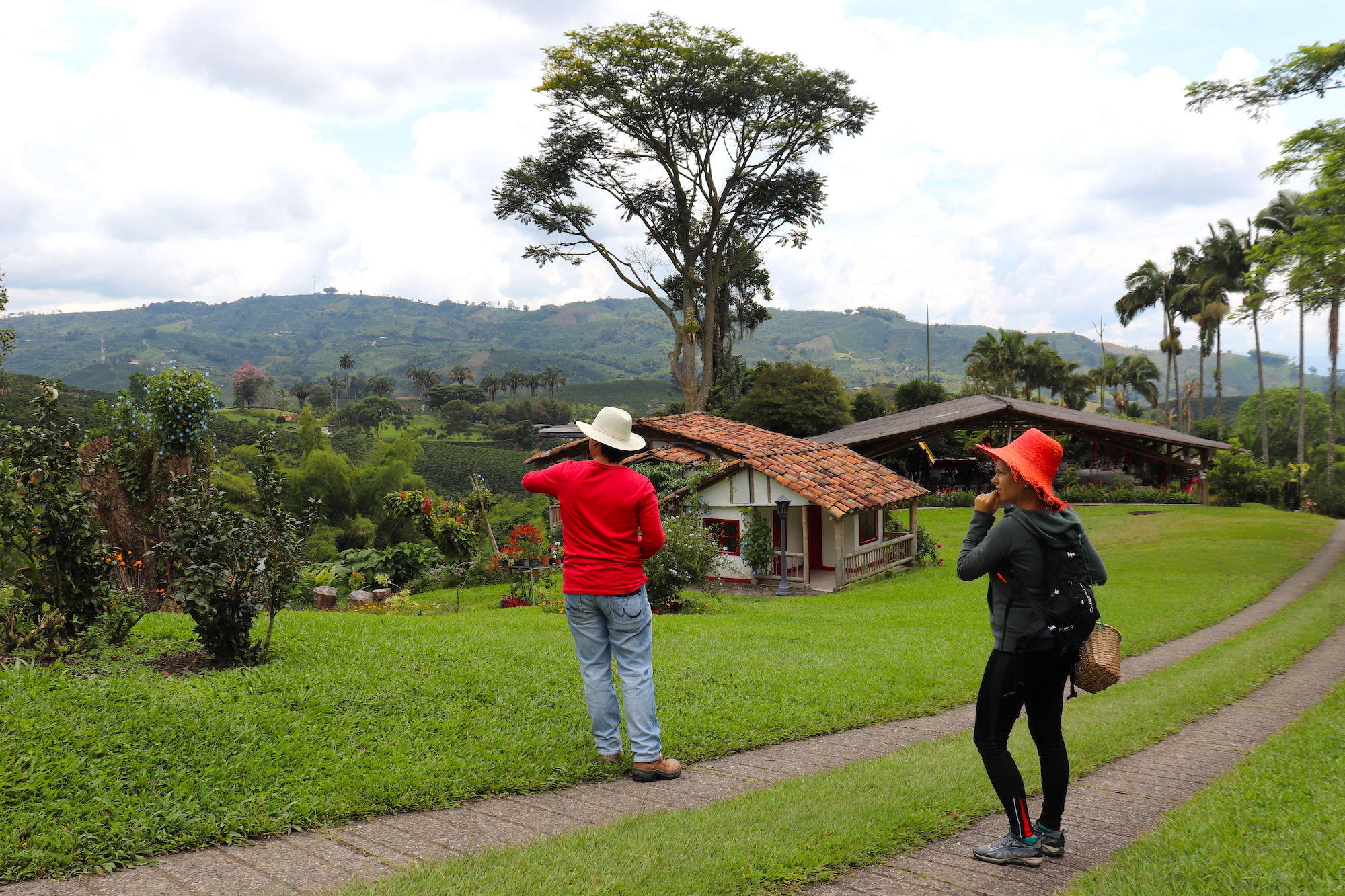
As the harvest is done manually, literally picking by hand bean by bean, hundreds of pickers are needed to harvest the coffee. There are typically two flowerings annually, so there is a main and secondary crop every year. Only the ripe beans are collected. Pickers rotate among the trees every eight to ten days, choosing only the beans which are at the peak of ripeness by hand.
As it is a seasonal laborious work, some of the pickers come from different regions and after each shift most stay at the farm to overnight, resting at these houses which seemed to be in good condition at Finca Guayabal.
It is a pretty tough job, but apparently, they make good money for Colombian standards. For each 1kg of coffee collected they receive 500 pesos. Each can collect between 100-200kg per day. With a simple calculation one can understand that they make between 1,500,000 to 3,000,000 pesos per month, which is between 500-1000 Euros per month of hard work.
Once the coffee is been picked, processing must begin as quickly to prevent fruit spoilage. The production process is relatively simple, yet it demands a lot of work. Once the coffee beans are harvested and dried, the next step is to extract the pulp. It is done through a pulping machine which separates the skin and pulp from the bean. Then the beans must be separated by weight as they pass through water channels. The lighter beans float to the top, while the heavier ripe beans sink to the bottom. Basically, the second quality coffee is the one floating, as it is probably broken, or it was bitten by insects or birds. The first quality coffee will stay at the bottom. This is how they separate first class coffee from the second-class coffee.
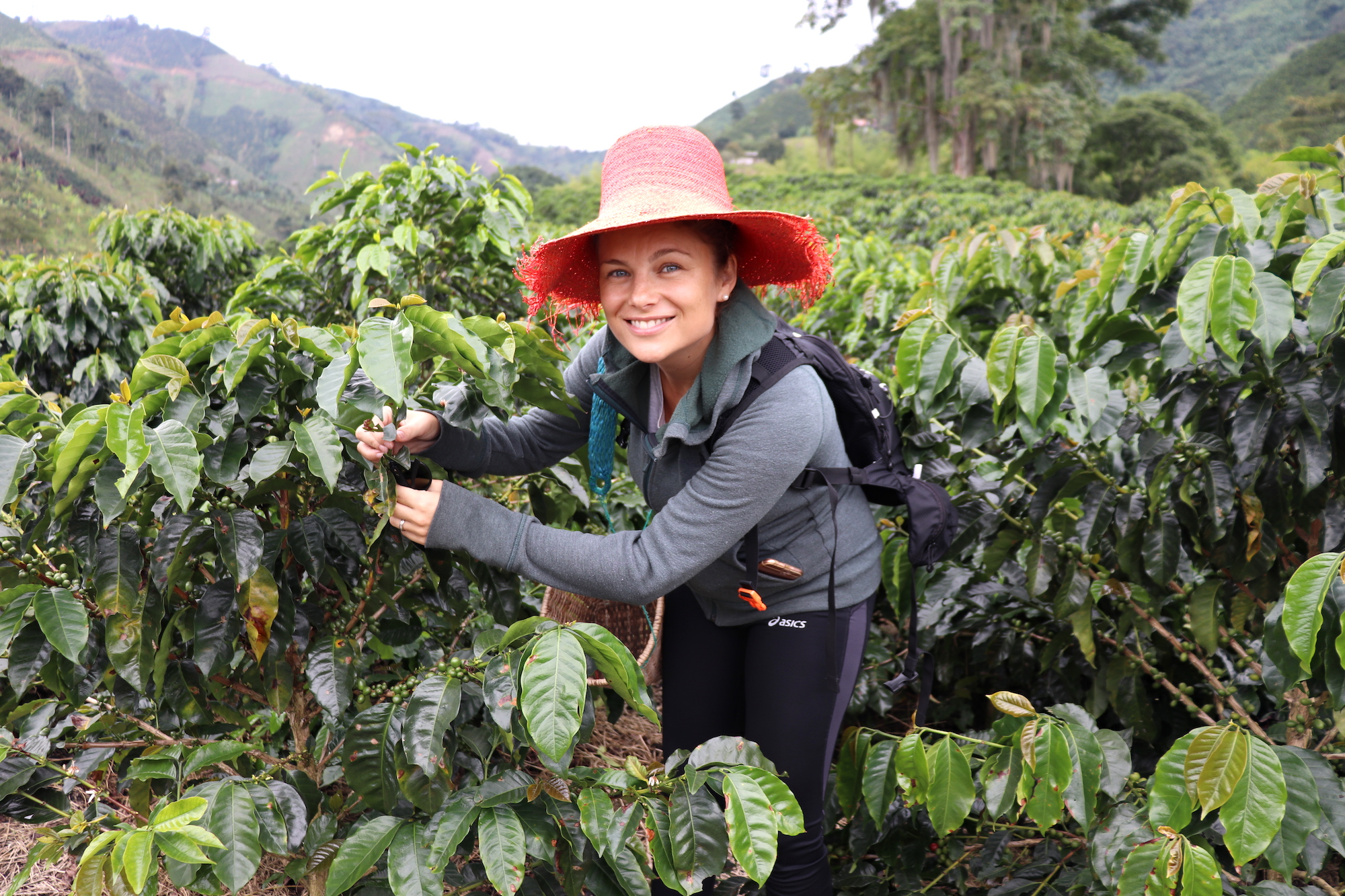
After separation, the beans are transported to fermentation tanks to remove the slick layer of mucilage that is still attached to the seed. While resting in the tanks, naturally occurring enzymes will cause this layer to dissolve. When fermentation is complete, the beans feel rough to the touch. They are rinsed by going through additional water channels and then they get ready for drying. After drying on the sun or in the oven, depending on the producer, the coffee is once again graded and sorted for imperfections. Defective beans are removed by hand, ensuring that only the finest quality coffee beans are exported. Second quality and imperfections are sold to be processed for the local market. It was interesting to realize that most Colombians drink second quality coffee even though producing some of the finest coffees in the world. Wow! We did not know that!

Furthermore, considering that local demand is higher than the supply of second quality coffee, Colombia often imports cheaper robusta coffee from Brazil. It reminded me of Nigeria, that has plenty of sweet crude oil which barely needs refining, one of the best in the world, but most of it goes for export while they import refined oil for domestic consumption.
Another interesting insight and eye-opener was learning about the roasting process. Roasting is generally performed in the importing countries because freshly roasted beans must reach the consumer as quickly as possible. It transforms green coffee into the aromatic brown beans that we purchase in our favorite stores or cafés. What we didn’t know is that the roasting process called torrefacto, common in Spain, France, Paraguay, Portugal, Mexico, Costa Rica, Uruguay, Argentina and many other countries, involves adding up to 25% of the weight of the bean in sugar in order to increase weigh, glaze creaminess and to preserve the beans for longer. Some say that the sugar in the roasting process is the reason behind the French super creamy espressos. Besides taste and cream, we believe there is a commercial reason too. Considering that coffee cost is higher than sugar cost, and that for every 10 kg of torrefacto coffee 2 kg are made of sugar, someone is making money on it. In this case, the importer and roaster. Another problem is that you are getting sugar on your coffee, without knowing it. Not good for someone with diabetes, our professor explained.
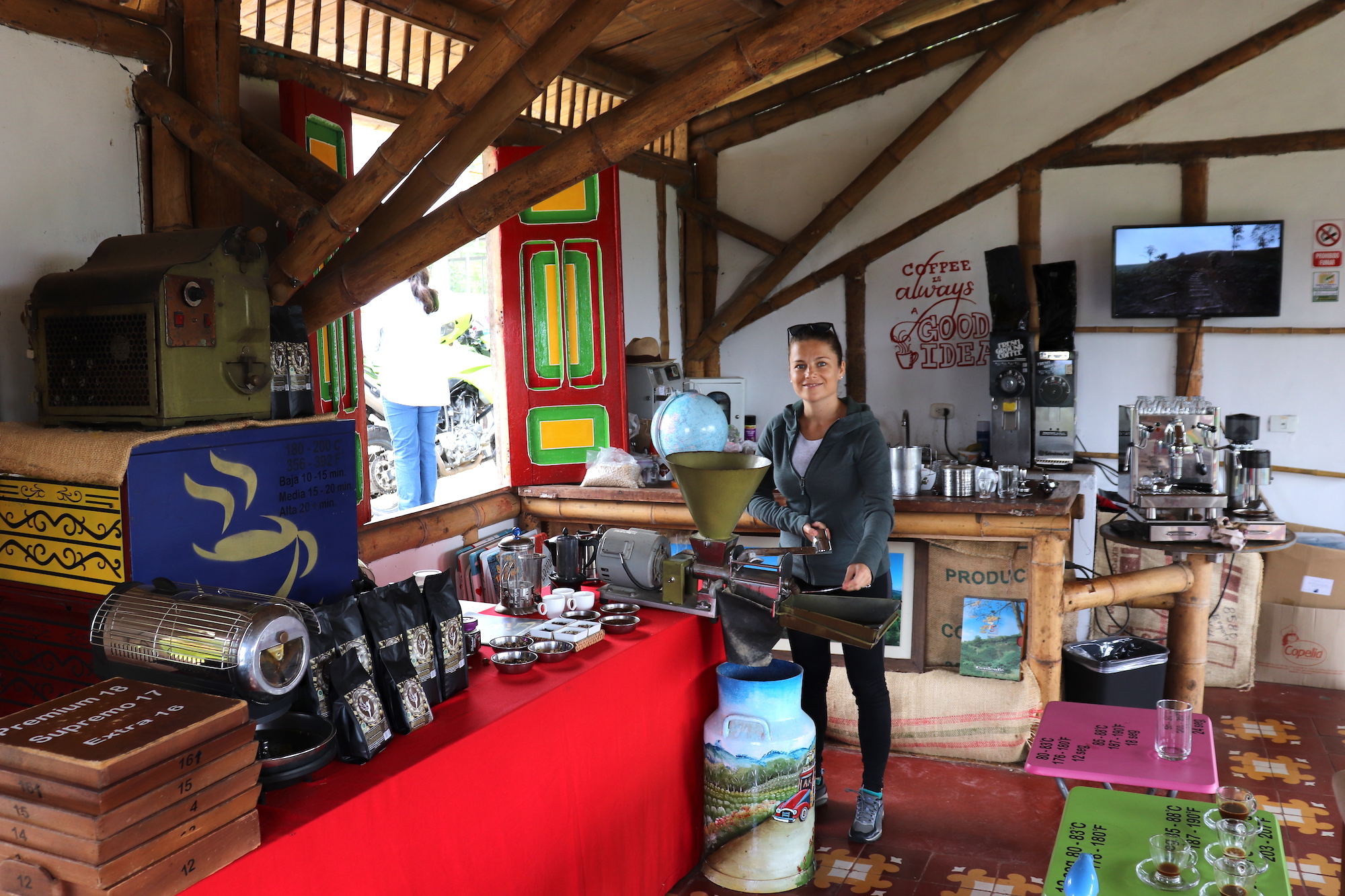
It was great to have a holistic understanding about the business and the sustainability of Guayabal farm. Most sub products of the coffee production and leftovers are taken and utilized on a wide variety of purposes within the estate. The coffee pulp is used as fertilizer and the dry skin as combustible for the drying process. The plantation also produces other products such as orange, lemon, mandarin, mango, avocado, banana, plantain, cacao and cotton that complement the whole coffee cycle. They grow a Chamaedorea tree, which we initially thought was just a bamboo tree but is a type of palm tree utilized to build strong structures for the buildings of the farm. We spotted a splendid diversity of flowers, loads of colorful birds including hummingbirds everywhere, butterflies, snakes, frogs and interesting insects. What a fantastic place!
It was super fascinating to learn all these in one day. To hike over the coffee plantations to understand how it grows, how it is harvested, and finally how it is processed until the final act of consumption. The tour ended with an exam and we happily received a graduation diploma which we celebrated over a couple of first quality Colombian espressos. As by then we were starving so we decided to try a delicious grilled trout at their restaurant. It added the 5 star to our amazing experience. We were truly fascinated by Colombia’s coffee region!
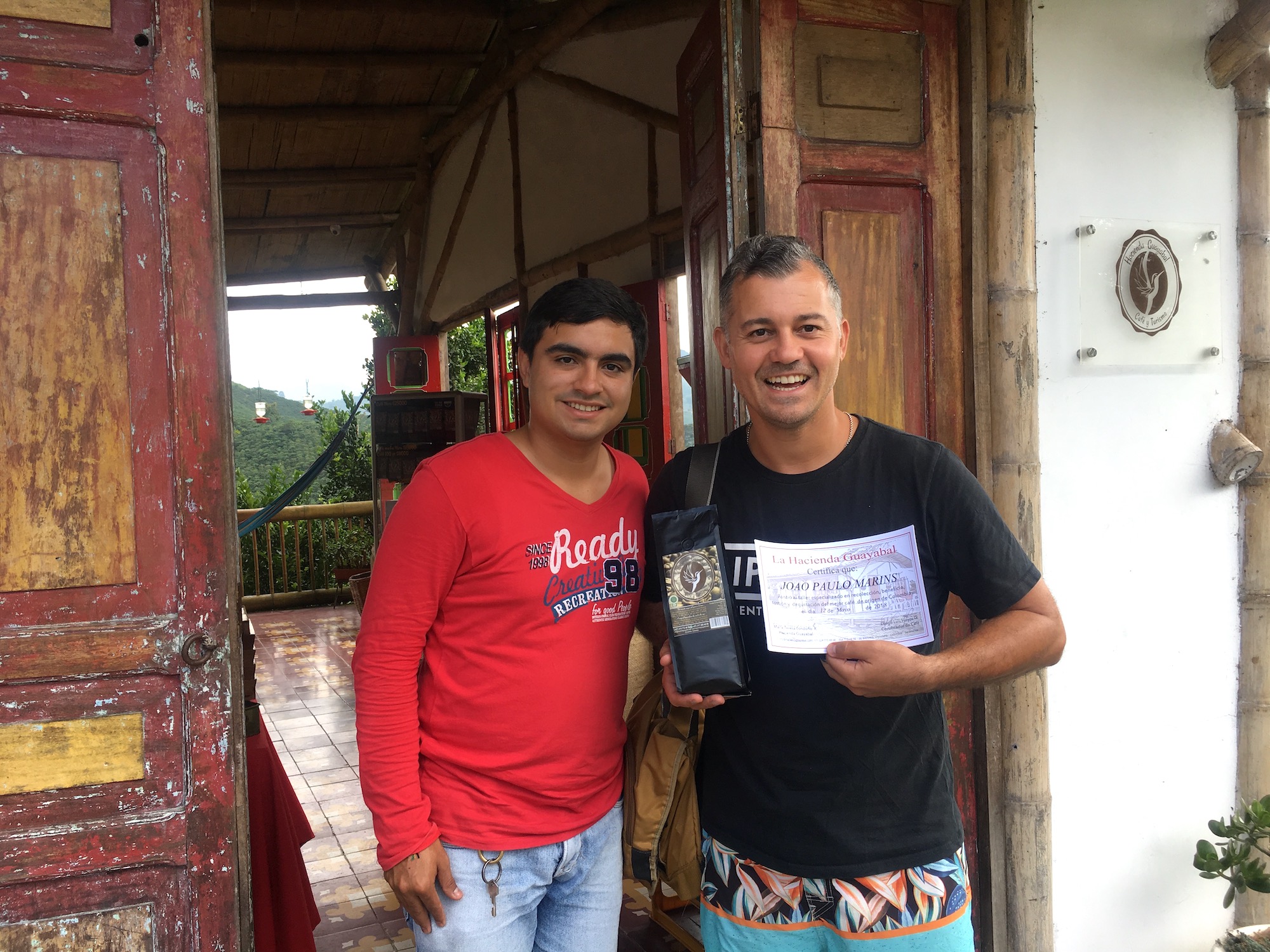
Salento
Salento was located less than 80km from Finca Guyabal, and we had taken note as a must go destination due to its neighboring Cocora Valley and its rare lofty wax palm trees. We were planning to camp at La Serrana Hostel, and what a gem we found when we got there! The place was full of campers. Lucky enough, someone had just left a paved parking place as we arrived.
Besides its location on a high hill with breathtaking views to the valley, we met many other overlanders which we previously encountered on the road: Tim and Julia, from Germany, which are on our stories of Panama and Medellin, a young Dutch couple we met at Grand Canyon and Panama and Peter once again. The world became so small again in our little Pan American traveling community. We ended up having fun in a good vibe social atmosphere for couple of days. One of those spontaneous and cheerful moments.
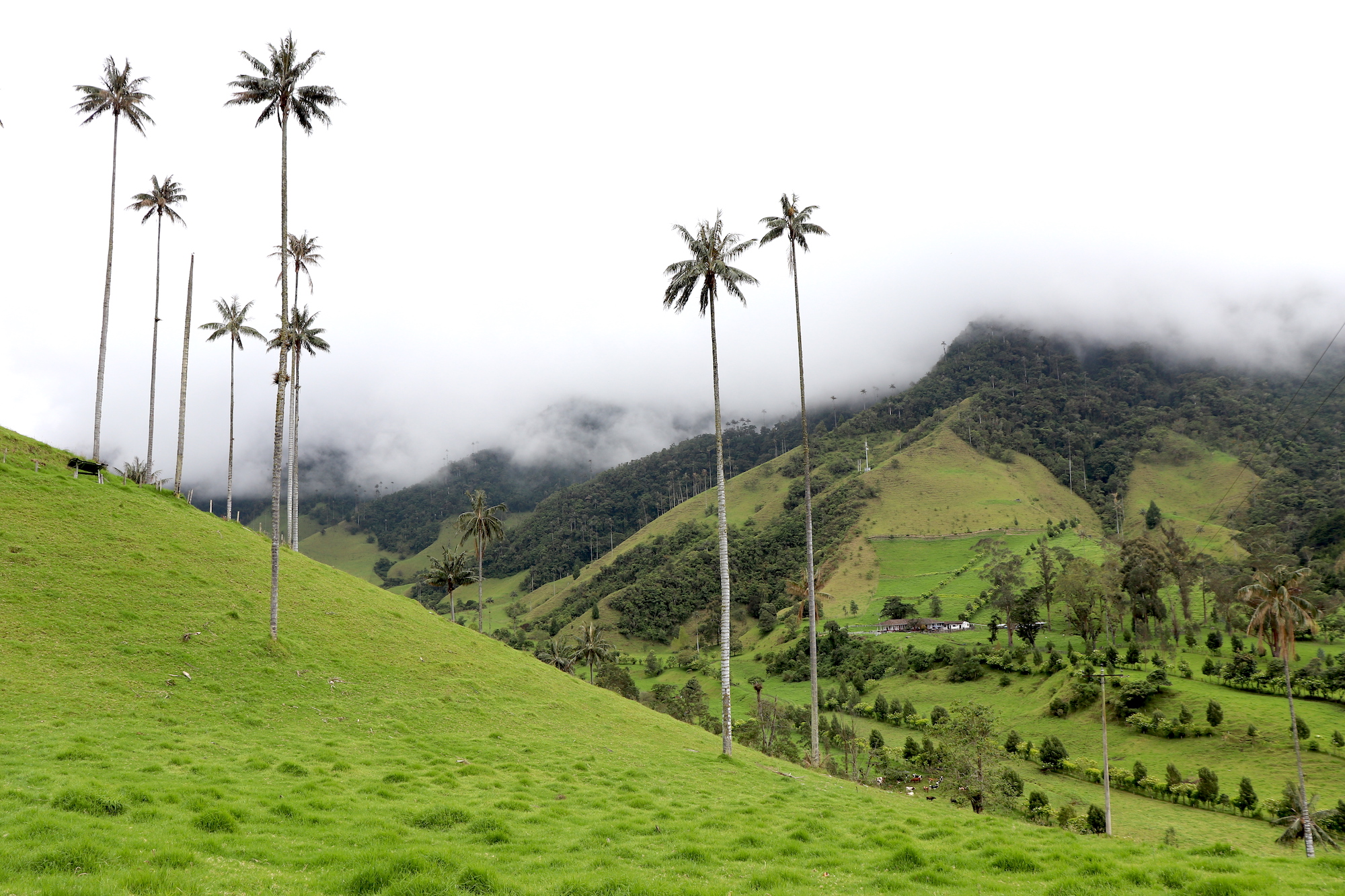
We were so excited to hike the trails of Cocora Valley with its famous flora and fauna. We had only one issue: the weather. It was raining and the forecast indicated a lot of humidity and rainfall the following days.
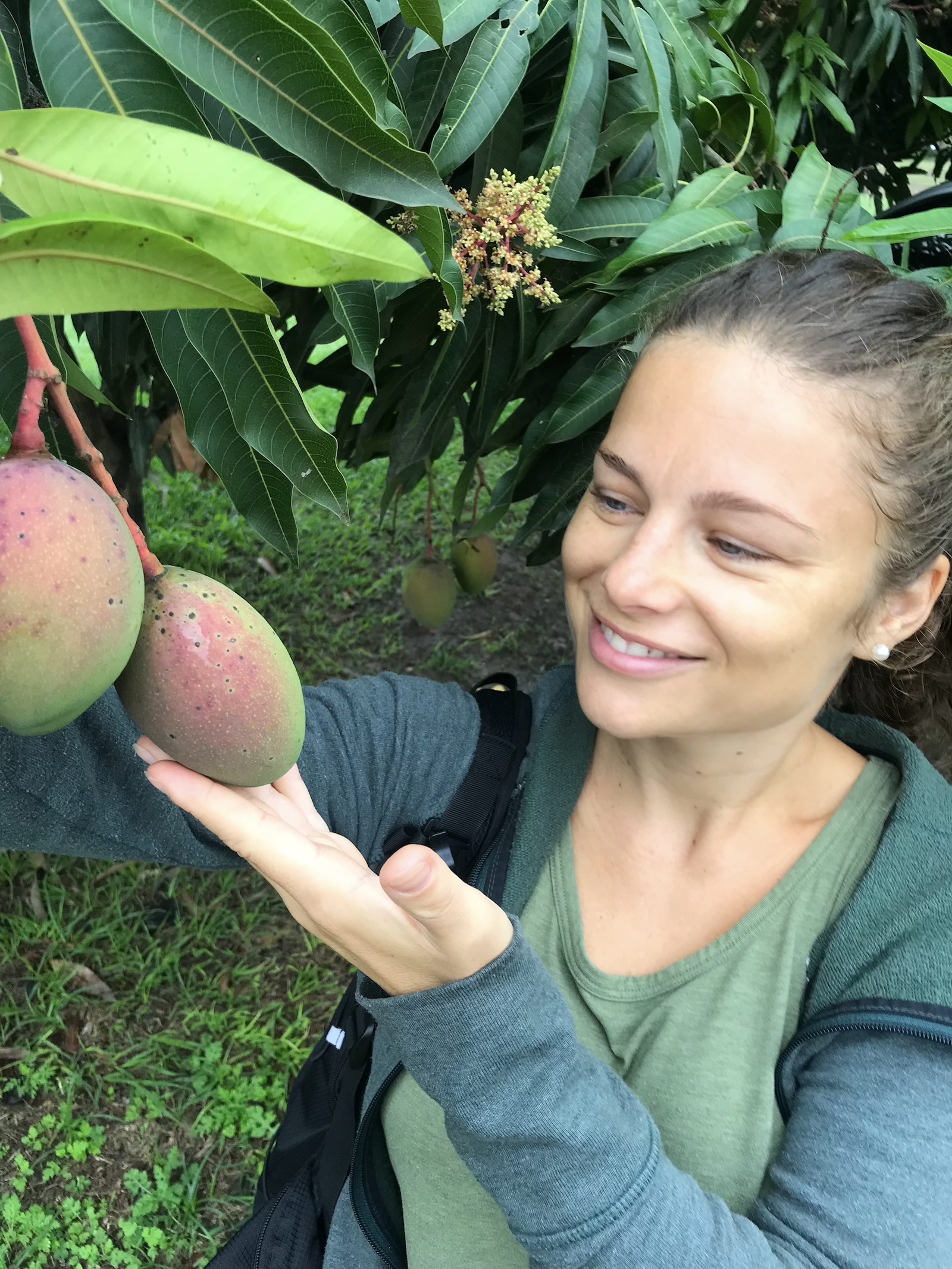
Regardless of the cloud cover we departed one morning to visit the Cocora Valley. We left Brutus parked and took an old 4x4 jeep ride 11km from downtown Salento to the entrance of the valley. As we got there, we were amazed by the panorama to the wax palm trees. These palm species are the tallest in the world and are Colombia’s national tree. They are in danger of extinction thus protected by law. We were lucky to have that sight, but the rain continued to chase us. We realized there was not much we could explore in the rain. At the end of the day I was pregnant, so we could not risk getting a cold. Back to our sheep, back to our camp.
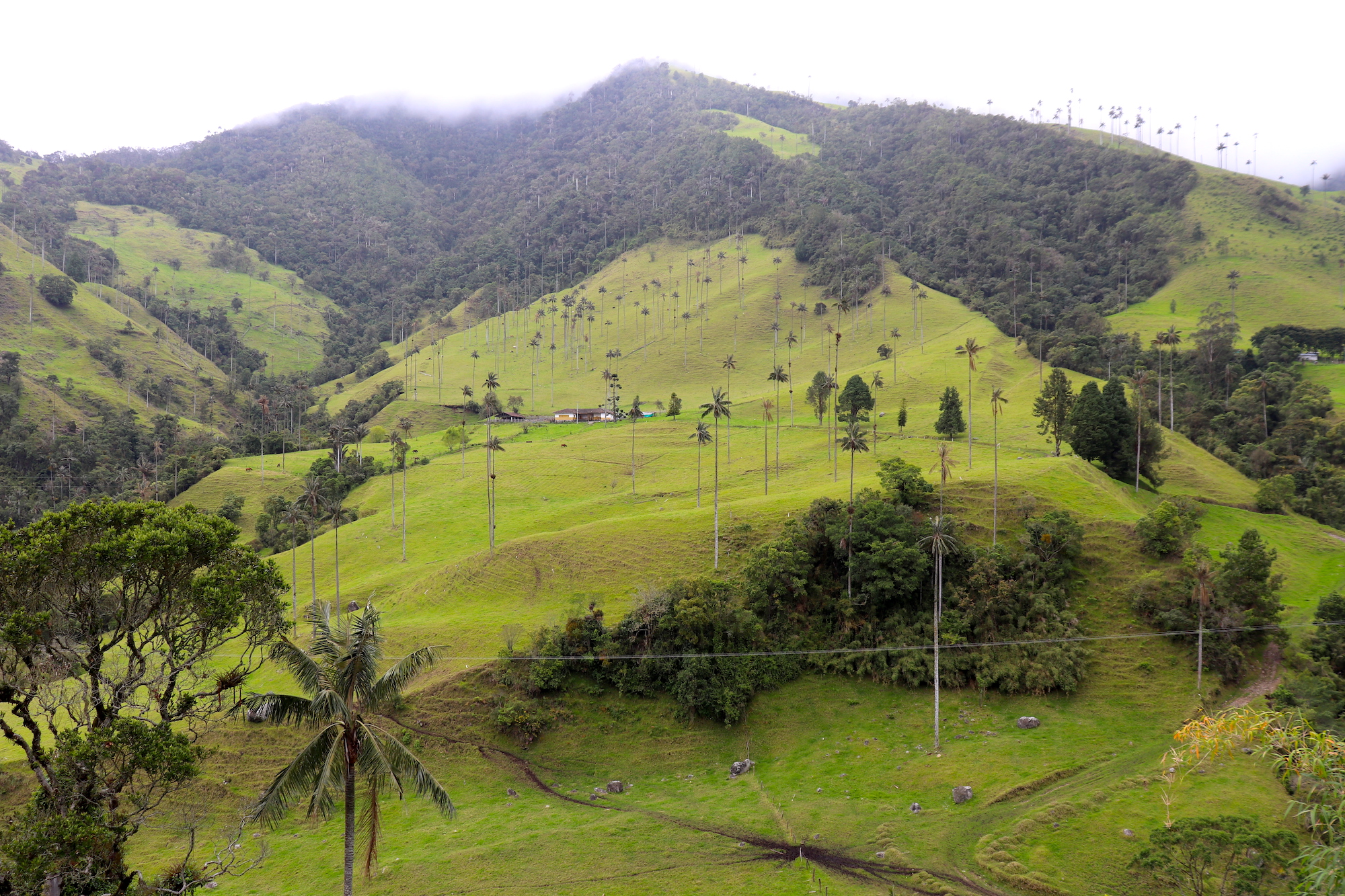
We returned to Salento roaming the streets, admiring the colorful sight of the mountain town with its traditional colonial architecture. At the picturesque central square was an exhibition of these 4x4 Toyota Landcruisers from the old days. A genuine Andean town scene.
By noon we indulged ourselves into one of the local delicacies, grilled trout with garlic. Gosh! It was delicious! What a throwback into my childhood. My father was a mountain river trout fisherman, and I grew up eating this type of meal. His trout was so fresh as the one we had in Salento. Blessed!
Although we loved staying at La Serrana Hostel enjoying the social scene, we had to advance with our journey towards Cali to service Brutus’ breaks and to visit Las Lajas Sanctuary before crossing the border with Ecuador.
Cali
In Cali we stoped at an Iveco dealer to service Brutus breaks as in JP’s opinion the service in Panama was not up to the standards when it comes to breaks. We were a bit anxious to manage an appointment and get everything done the same day: fixing the issue and getting back on the road without delays. So, we decided to overnight at a truck parking lot near the Iveco dealer to be able to get to the service station very early morning. The stop over proved to be worthy. The brake pads were not correctly installed in Panama, so we got them fixed in Cali. Everything else looked well. In less than two hours we were done and continued with the road south towards Las Lajas Sanctuary. We paid 36 Euros for the service, which was almost nothing compared with how much we pay at an Iveco dealership in Europe. We were both incredibly happy to get great service for that little amount paid. We moved on more relaxed about going up and down the mountainous route with our new breaks.
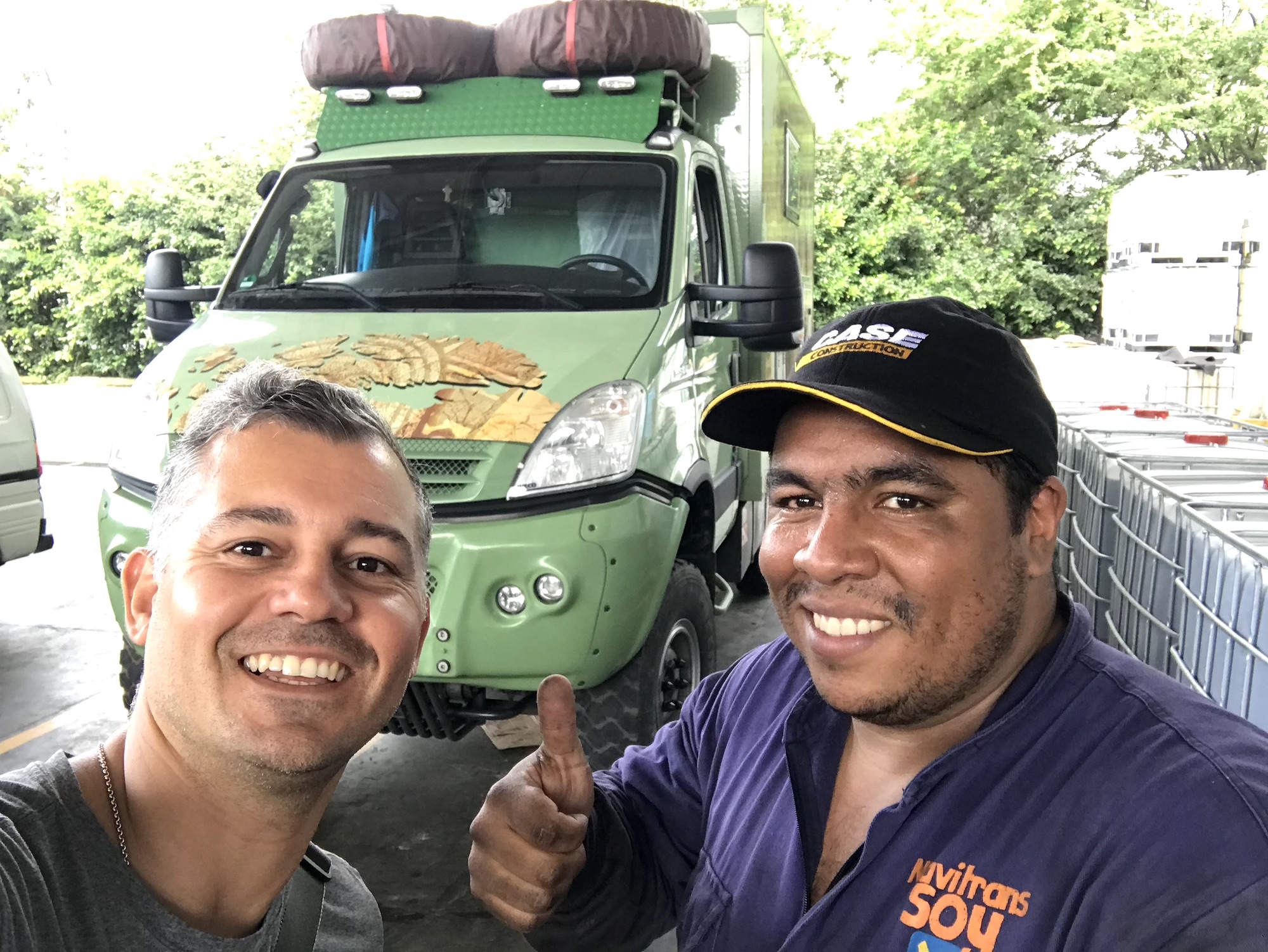
Santuario “Virgen de Las Lajas”
We made it in two days from Cali to Las Lajas Sanctuary. From about 1000m altitude we went fast to 3000m. The truck’s turbo diesel engine had no problem to push zigzagging up the mountains, but I was concerned for the baby. It was for the first time we climbed up that much that quickly. At that point it seemed that my body reacted well to higher altitudes. No dizziness nor headaches. But I must confess I was thinking with terror at what was coming next. We were planing to cross the continent south through the Andes and we were expecting long drives up to 4000m heights in Peru and Bolivia. Would me and the baby manage that ?! We did not know exactly, but we were about to find out soon 🙂
Gorgeous landscapes of hills, valleys and visible fertile land with coffee plantations, cocoa, banana, citrus fruits, cultivation of corn, potatoes, beans, tomatoes, and raspberries transforming into rocky summits with little vegetation, dramatic sights of waterfalls, rivers crossing canyons and settlements placed in the steepest areas. In these high altitudes people wore thick blankets and ponchos on top of their clothing. The weather got lot chillier at 3000m altitude. We savored each kilometer of those foggy and mystic highlands. It was something new and we could not believe Colombia had so much beauty hidden within its upland terrain.
The Las Lajas Sanctuary promised to be a unique and impressive sight. As we approached the location late in the afternoon the first thing we had to do was to find a good place to overnight, ideally next to the basilica. Luckily, we could station at the cable car parking lot which takes to the sanctuary. It was empty and we had a tremendous view over the valley.
Las Lajas Sanctuary is located inside a canyon and there is a lot of walking through narrow ways filled with religious souvenirs shops to get there. It was interesting to notice along the route thousands of plaques cemented on the rocky walls of the canyons showcasing the gratitude for the miracles and graces achieved with the blessing of The Virgin. When we could finally see the sanctuary we understood why so many consider it one of the most beautiful cathedrals in all of South America. Constructed in gothic style, the basilica is built inside a canyon formed by Guáitara River and is dedicated to the veneration of the Lady of Las Lajas Ipiales. The picture is tremendous! The legend says that the first shrine was created after the apparition of the Virgin Mary in a paint inside the canyon. There were multiple reports of cases of miraculous healing so the first wooden chapel was built in the 1700’s. The gothic style cathedral was built in the mid 1900’s. Nowadays the place is a destination for tourism and pilgrimage. Picturesque, peaceful, extraordinary are not enough words to describe the scenery. A little piece of heaven built in an integrated way with the nature.
We anticipated that Colombia was a beautiful country but we didn’t know it had so much to offer. We felt we did not have enough time to savor and discover all of its beauty, but we got a good insight and we were thankful for our Colombian experience. Perhaps one day we will return to complete all the hikes we could not make with me pregnant, perhaps when our son is born. Colombia and its people really deserve the time to explore it at its fullest potential. We said goodbye to Colombia that day, hoping to return one day.
We expected a tough border screen with Ecuador due to the hundreds of Venezuelan refuges that tried to cross the frontier everyday. So after lunch we headed to the broder. It was an exodus when we got there. When we saw the amount of people we were almost in shock. We were thinking, it can’t be possible...
